Invasive Plants: 10 Beautiful But Invasive Perennials You Do Not Want In Your Garden
These invasive plants are all beautiful so you will be tempted to plant them in your garden. Find out which invasive species are not worth the hassle.
Since I’m in planning mode for adding a Japanese-inspired garden to my yard, I have been looking for plants that I will want to include in the space. (You can see some of my inspiration for that HERE).
And I was surprised to find that some types of Japanese maples (a requirement for a Japanese garden if you ask me) are on the Invasive Species list!
That got me thinking about all of the experiences I have had with invasive plants over the years. I know that I do not want to intentionally plant another one!
For one thing, invasive species add so much more work to the gardening process. If you read my post on low maintenance gardening, you know that even though I love my garden, I also don’t want to spend all of my free time working in it.
And the second problem is that most of these plants can easily escape your garden. When they set up shop in a natural habitat, they really cause a lot of damage to the native ecosystem.
So in the interest of sharing, keep reading to see my list of beautiful invasive plants you do not want in your garden.
Note: Whether or not these (or any other) plants will become invasive in your garden depends on the growing conditions in your area.
The plants on this list can all be found on invasive plants lists maintained by state and university extension programs. Which means they have the potential to become invasive.
But if you live in an area where the growing conditions are not favorable for the plants, they may not cause any problems…or may not grow at all 🙂
If you’re not sure how a plant will behave in your area, talk to your local nursery and other gardeners in your neighborhood to find out. Or check the Invasive Plant Atlas for North America, which provides maps of where different varieties of plants are considered to be invasive.
Purple Loosestrife (Lythrum salicaria)
Purple Loosestrife by GartenAkademie (Own work) [GFDL or CC BY 3.0], via Wikimedia Commons
Purple Loosestrife (Lythrum salicaria) is a very hardy perennial that spreads easily and can choke out a natural wetland (or field) very quickly.
The density of the shoots kills all other plants in its path, which is why it is on many invasive species lists across North America (and has even been banned in some places).
Cooper Marsh Purple Loosestrife By Saffron Blaze (Own work) [CC BY-SA 3.0], via Wikimedia Commons
This picture of the Cooper Marsh Conservation Area in Ontario, Canada shows just how invasive it can be.
Garden varieties of Loosestrife are still for sale in some places, and are sometimes included in wildflower seed packets.
Since these can cross-polinate with wild varieties to create seeds, make sure to double-check what you are buying.
If you want more information, there is an in depth article on the Minnesota Sea Grant website.
Japanese Honeysuckle (Lonicera japonica)
Forest & Kim Starr [CC BY 3.0], via Wikimedia Commons
I have never actually planted Japanese Honeysuckle, but I do have first hand experience with how invasive it is.
Some of it is growing wild in the ravine behind my house and it is impossible to keep under control. I actually think it is worse than the kudzu…and if you live in a location where kudzu grows, you know how invasive it is…
This Honeysuckle has white and yellow flowers that are really pretty, and it smells wonderful when it is blooming. But it is definitely not worth the trade off of trying to keep it from strangling all other living plants!
Once it escapes into the wild (as it inevitably seems to do), it is devastating to the environment.
Note: There are non-invasive varieties of Honeysuckle which will be just fine in your garden. It’s the Japanese version that can cause problems.
Autumn Clematis (Clematis terniflora)
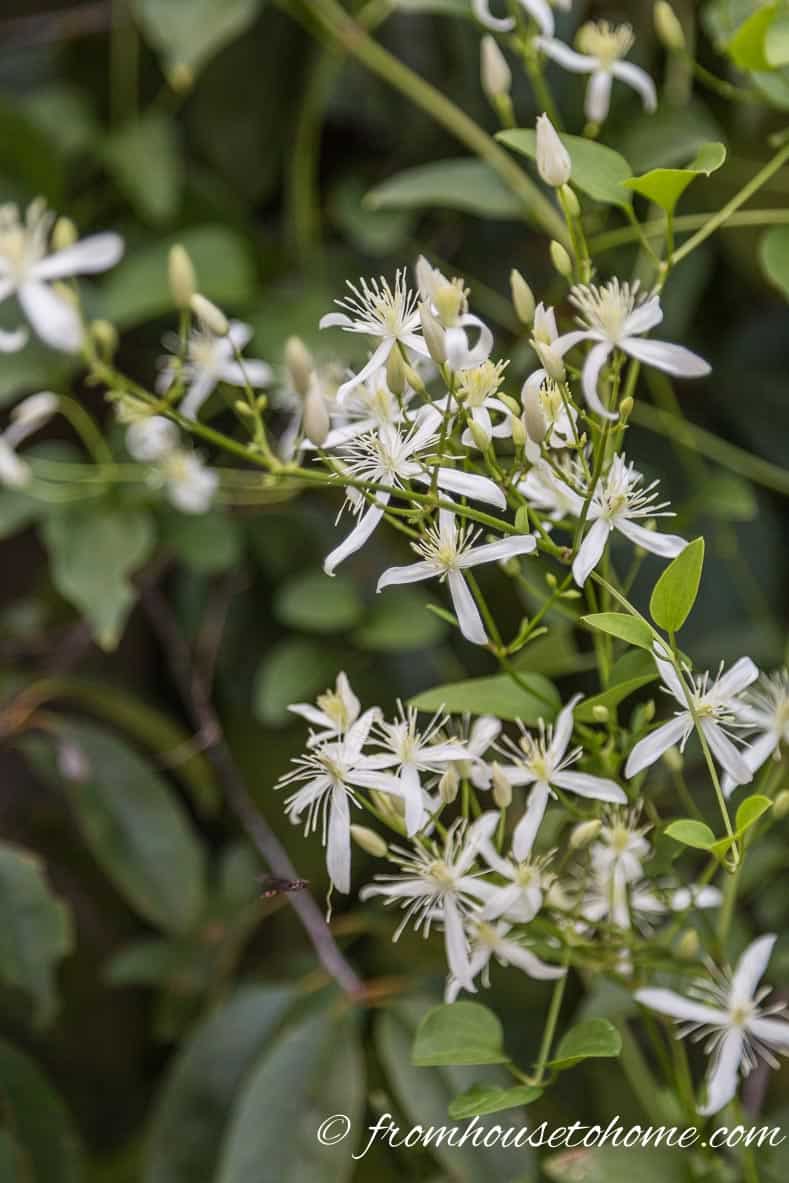
Autumn Clematis is not a plant that I ever would have guessed to be invasive. All of the other clematis varieties I have grown have always been very well behaved.
I planted this on my fence a couple of years ago, and actually it never did very much in my yard (I thought it had died). Then I was out pulling the kudzu and honeysuckle outside my fence, and saw this other vine that was growing everywhere. The blooms looked a lot like the autumn clematis I had planted, but I thought it couldn’t be the same plant.
Then I looked it up and found it on the Invasive Plant Atlas for South Carolina.
Of course, there are many non-invasive varieties of Clematis which absolutely deserve a spot in your garden, so don’t be afraid to plant those ones!
Wisteria (all varieties)
Wisteria By Dcrjsr (Own work) [CC BY 3.0], via Wikimedia Commons
I hate to add Wisteria to this list (it is really beautiful when it is blooming!)…but having lots of personal experience, I really can’t leave it off…
When I moved to South Carolina, a lot of people warned me that I shouldn’t plant Wisteria. I even had a co-worker tell me a story about over-turning a rented Bobcat trying to pull out Wisteria from the ravine at the back of his yard…but that still didn’t stop me from planting it.
I read that the Chinese (Wisteria sinensis) and Japanese versions (Wisteria floribunda) of Wisteria were invasive (you can find them on the Plant Conservation Alliance’s Least Wanted Vines list), but the American variety (Wisteria frutescens) was not on the list. So how bad could it be? (I have since found out that only non-native plant varieties are classified as “invasive”. So because this is a native variety, it isn’t on the list.)
Now that I have it growing in my garden, I can vouch for the fact that once it gets going, even the native variety grows like crazy.
It starts out as a little plant, and it takes a little while to get going…but once it does, look out! You have to be really vigilant about pruning to keep it where you want it. The picture above was taken in the spring after I had completely cut the wisteria down to the ground in the fall. By the time it started blooming, it had completely covered the fence.
Then if you ever want to remove it, good luck 🙂 I tried to dig up a plant at the back of my yard 7 or 8 years ago, and I am still pulling rogue Wisteria plants out of the garden in that spot. The lesson learned is…if you love the look of Wisteria as much as I do, you need to be prepared to do some work to keep it contained!
Maybe I should just stick to the painted kind…like I did in my office a while back (you can see the instructions for that project here).
Lily of the Valley (Convallaria majalis)
Lily of the Valley By H. Zell (Own work) [GFDL or CC BY-SA 3.0], via Wikimedia Commons
Lily of the Valley is a pretty woodland plant that blooms in the spring and has a wonderful perfume.
They are very easy to grow and will spread like wild fire…which is the first reason you don’t want them in your garden.
But the second (and maybe more important) reason is that these plants are extremely poisonous. Any pets or children (or even adults) that eat part of the plant will require medical treatment for poison.
Periwinkle (Vinca minor)
By Forest Wander from Cross Lanes, USA (Forget me not flowers) [CC BY-SA 2.0], via Wikimedia Commons
Periwinkle is an easy to grow evergreen ground cover that does well in the shade and is covered with really pretty blue flowers in the spring.
Sounds great, doesn’t it?
However, it also will overrun every other plant in your garden if you let it.
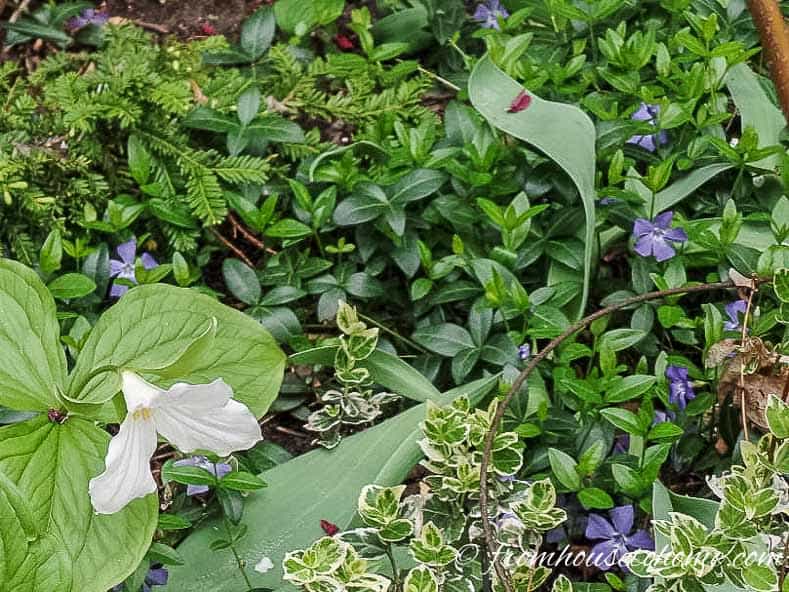
It starts out well mannered and seems like the perfect plant to add some interest underneath other plants in your garden.
But after if has become established (which takes a few years), it will start to grow up the stems of other plants and choke out any smaller plants in its way…except for the weeds which still seem to survive. You can see it in the background of this picture…it is beginning to get to the “takeover” stage.
This is another plant that I have spent many years trying to eradicate from my garden…without success so far…
Non-Clumping Bamboo (Phyllostachys aurea)

Ever since I saw this bamboo forest on Maui, I have loved the look (and sound) of bamboo.
It adds such a relaxing feel to the garden.
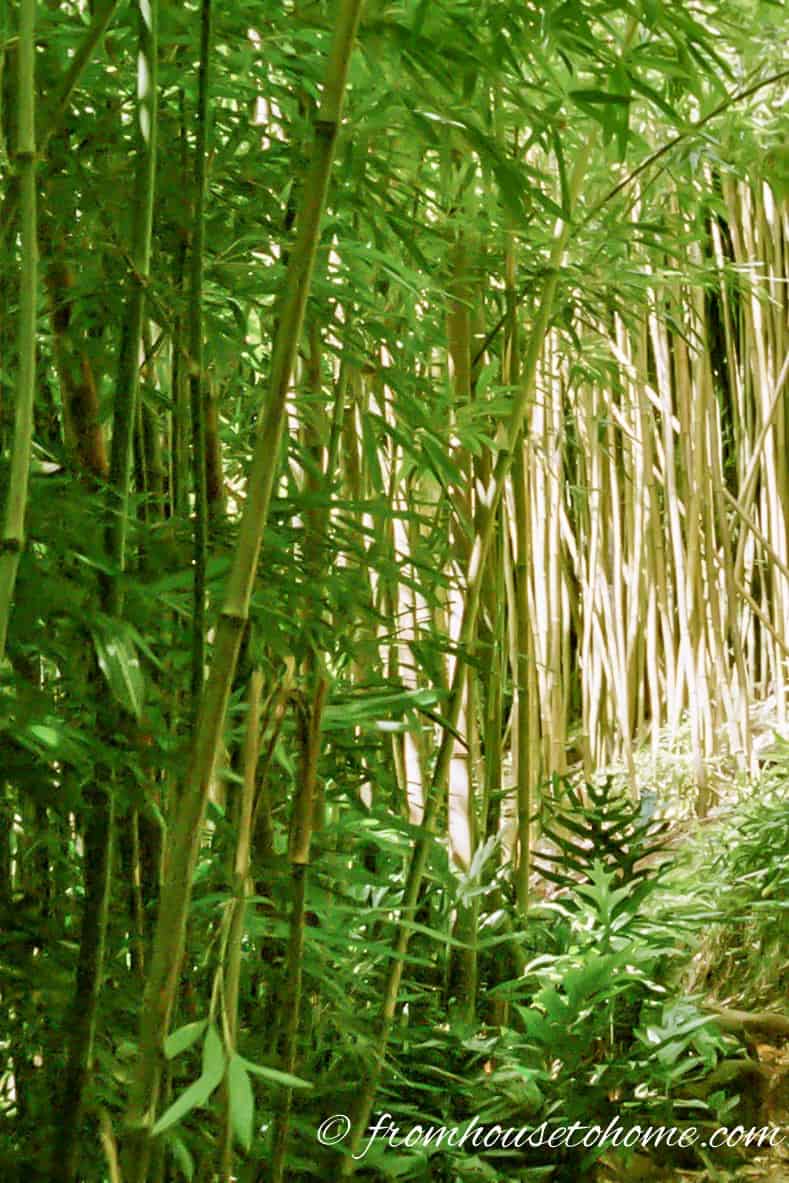
And then I saw the bamboo that had been planted along the railway tracks in South Carolina to act as a sound barrier…and has now taken over whole backyards. It is incredibly difficult to remove or contain once it has become established.
Since bamboo is part of the grass family, it is literally like grass on steroids. If you’ve ever tried to keep a running variety of grass (like Bermuda) out of your garden, you know how hard it is. Then think of trying to do that if the grass were the size of a bamboo plant!
There are some clumping bamboo varieties that are not as invasive, so make sure you plant one of these if you want bamboo in your garden.
Pampas Grass (Cortaderia selloana)

Pampas Grass is another large perennial grass that looks beautiful and is very easy to grow.
It also grows very quickly into a large clump and will self seed freely.
And that’s where the problem starts. It can easily crowd out all other plants if you are not vigilant about keeping it in check. Then if you try to dig it up, it has a massive root system that is very difficult to remove.
English Ivy (Hedera helix)
English Ivy by MurielBendel (Own work) [CC BY-SA 4.0], via Wikimedia Commons
Like a lot of people, I used to love using English Ivy in my hanging baskets. It always looks so nice trailing over the edge of the pot.
But if even one little piece of it touches the ground, you will have more ivy than you know what to do with.
That’s also what makes it so hard to get rid of…you have to remove every little bit of it from the ground or it will grow back.
Carpet Bugleweed (Ajuga reptans)
As the name suggests, Carpet Bugleweed (Ajuga reptans) is another ground cover that on the surface seems like a great addition to your garden.
Low growing, evergreen with purple-green leaves, and beautiful blue-purple flowers. And then it starts to spread and it’s impossible to pull out…the roots are in there, and like the ivy, any little piece left in the ground will grow.
In fact, in my yard, it not only takes over the garden but will totally cover the sidewalk, too if I let it.
If you are looking for a more comprehensive list of invasive plants, try the Invasive Plant Atlas for North America. The site was developed by The University of Georgia – Center for Invasive Species and Ecosystem Health and the National Park Service, and is maintained by several university, state and federal extension programs.
invasive.org is another organization that maintains a database of all kinds of invasive organisms (not just plants) for North America.
Both sites provide maps with each plant listing that let you know where the plant is considered to be invasive.
Other Plants You Might Like Better
Do you have experience with any other types of invasive plants? Tell us in the section below.
Pin It So You Don't Forget It!
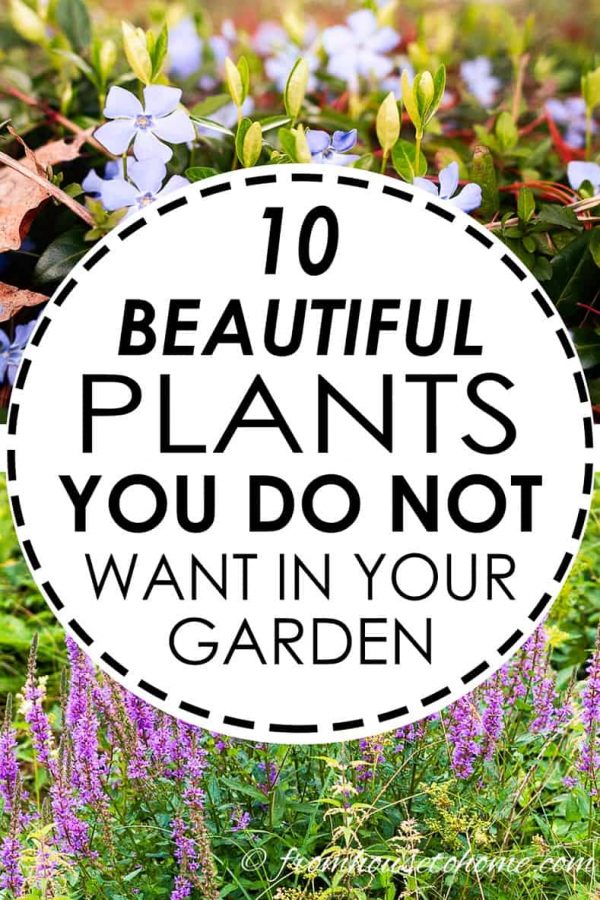
This post was originally published on January 13, 2017 but was updated with new content on September 15, 2022.

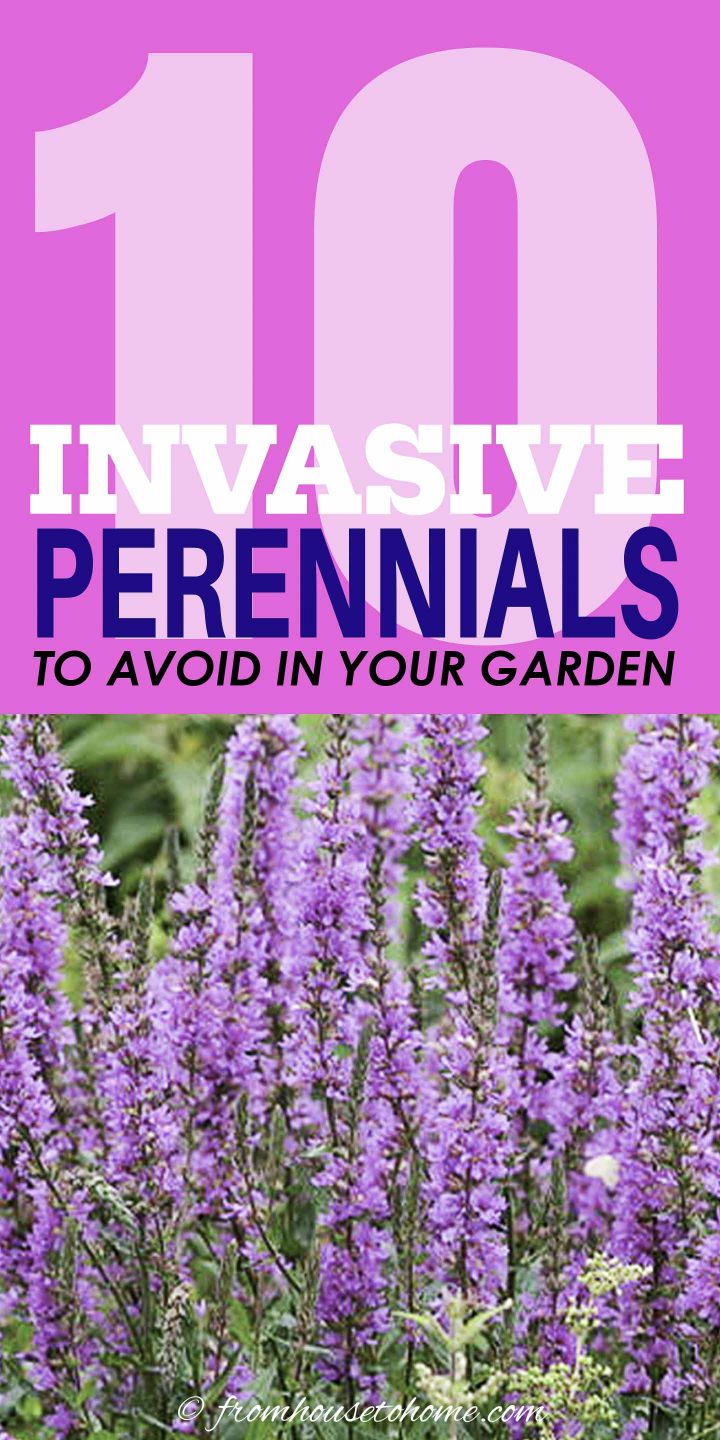
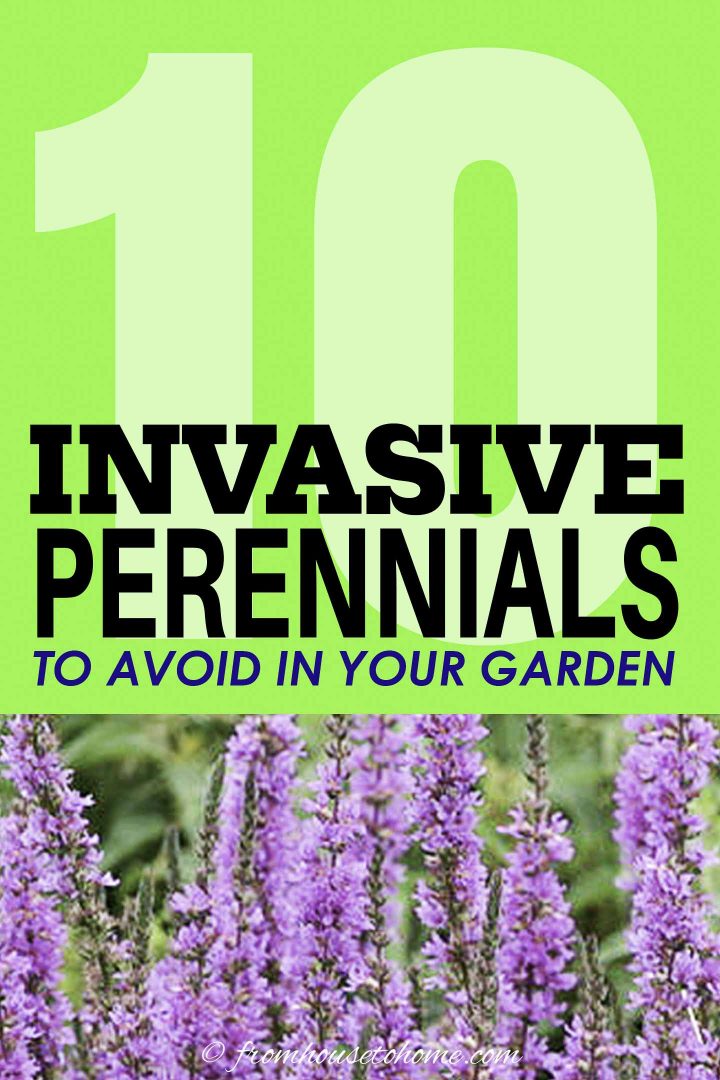
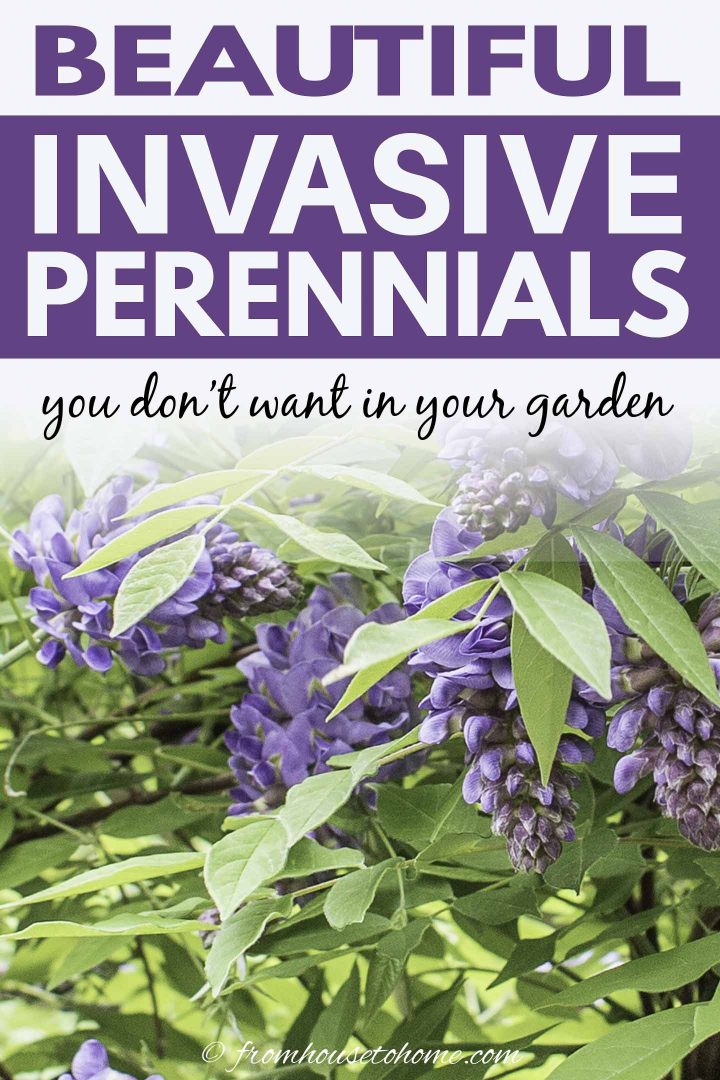
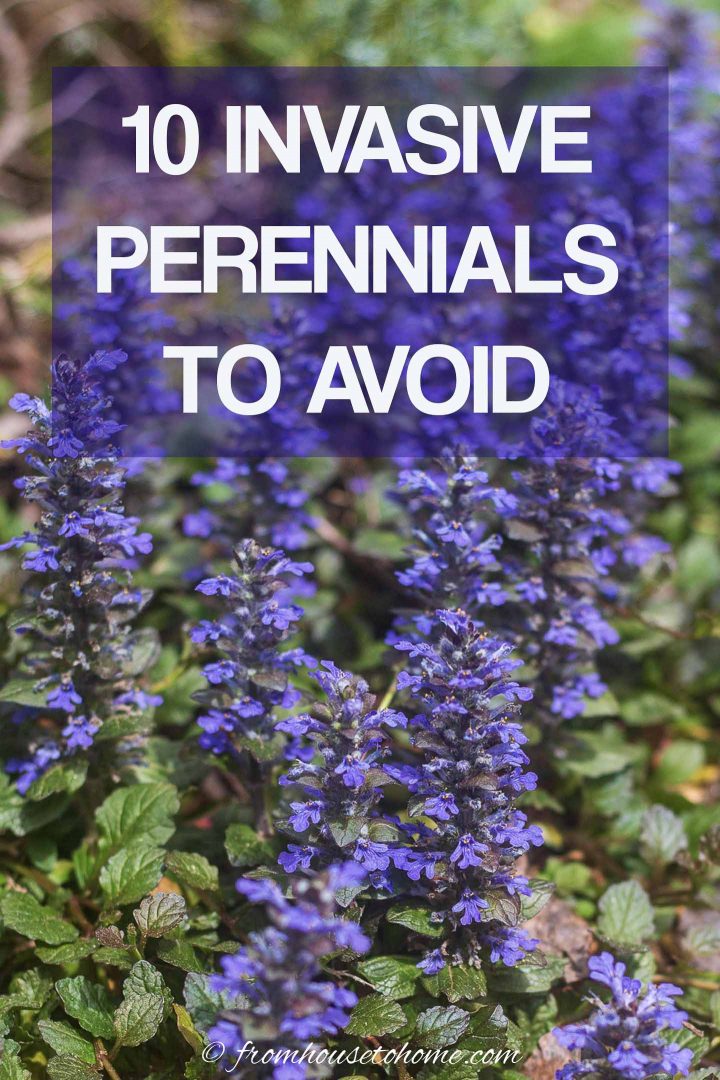

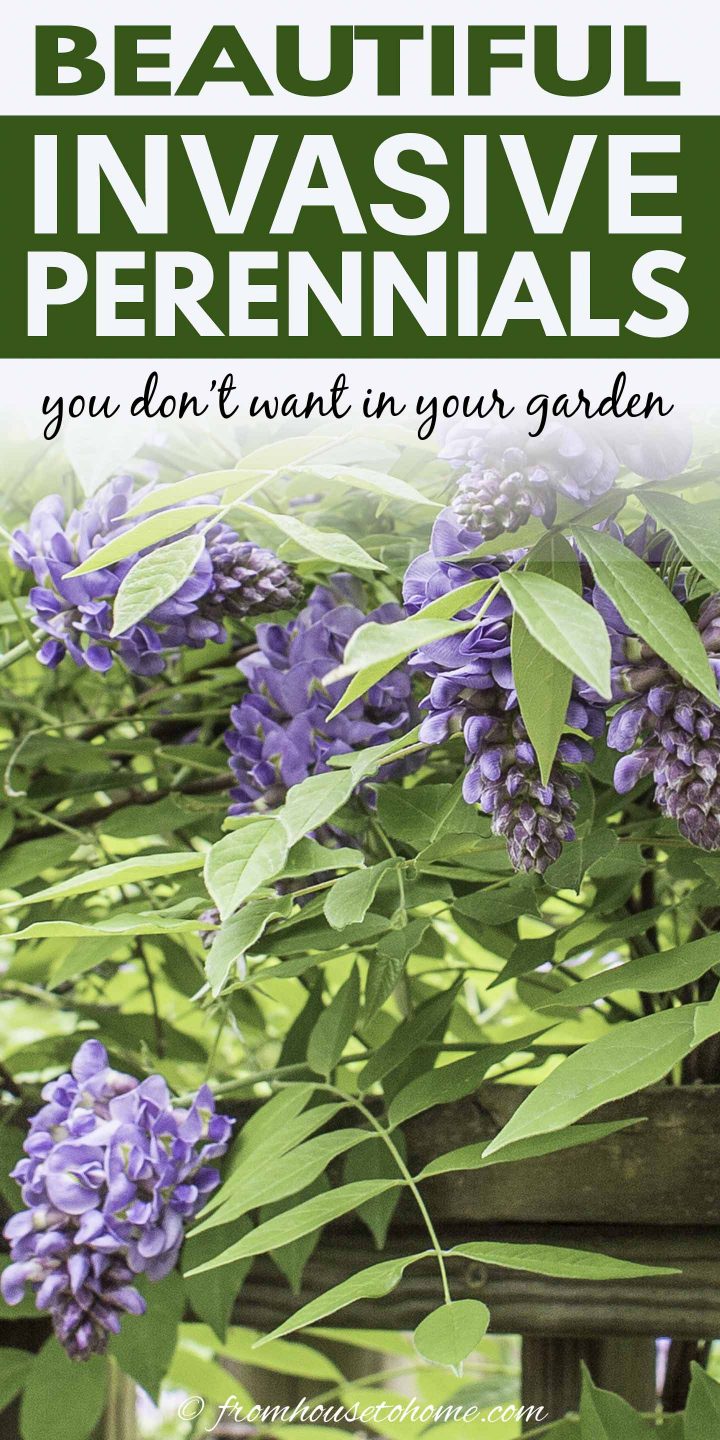
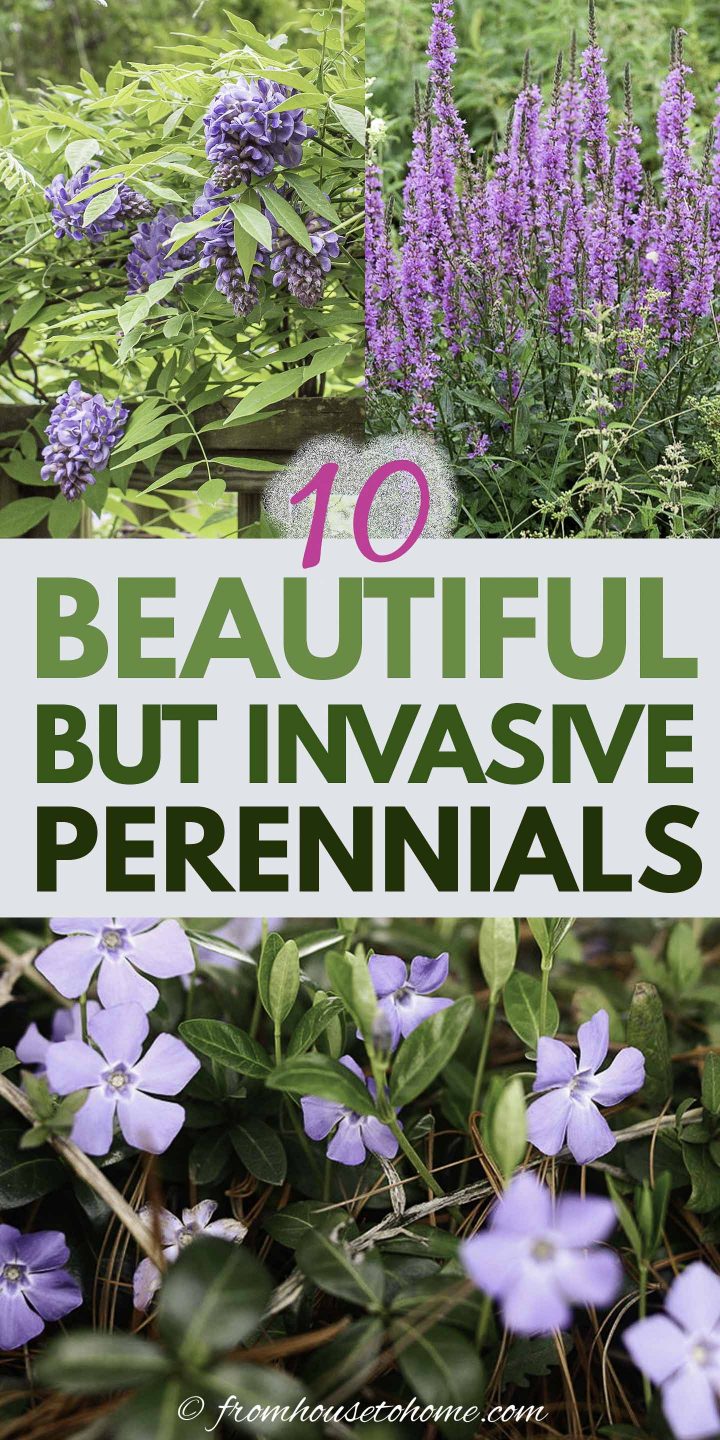
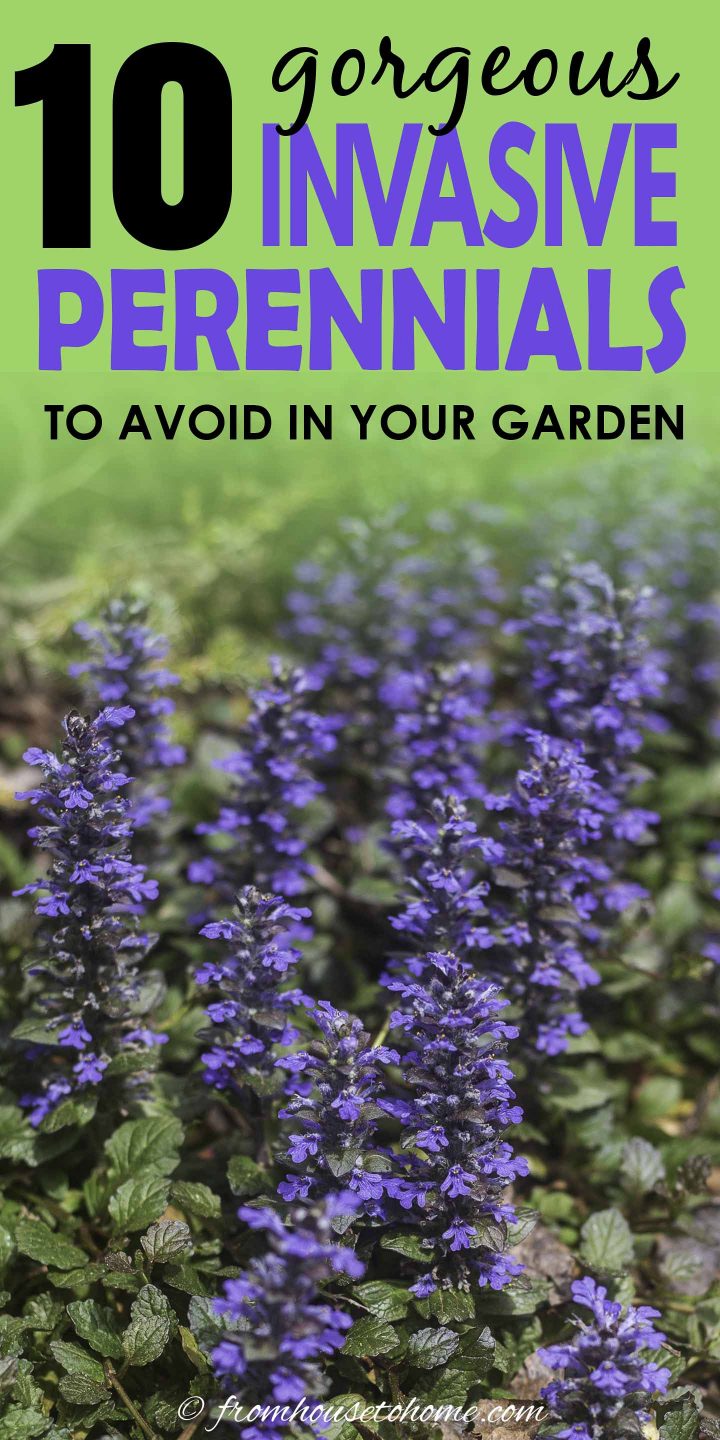
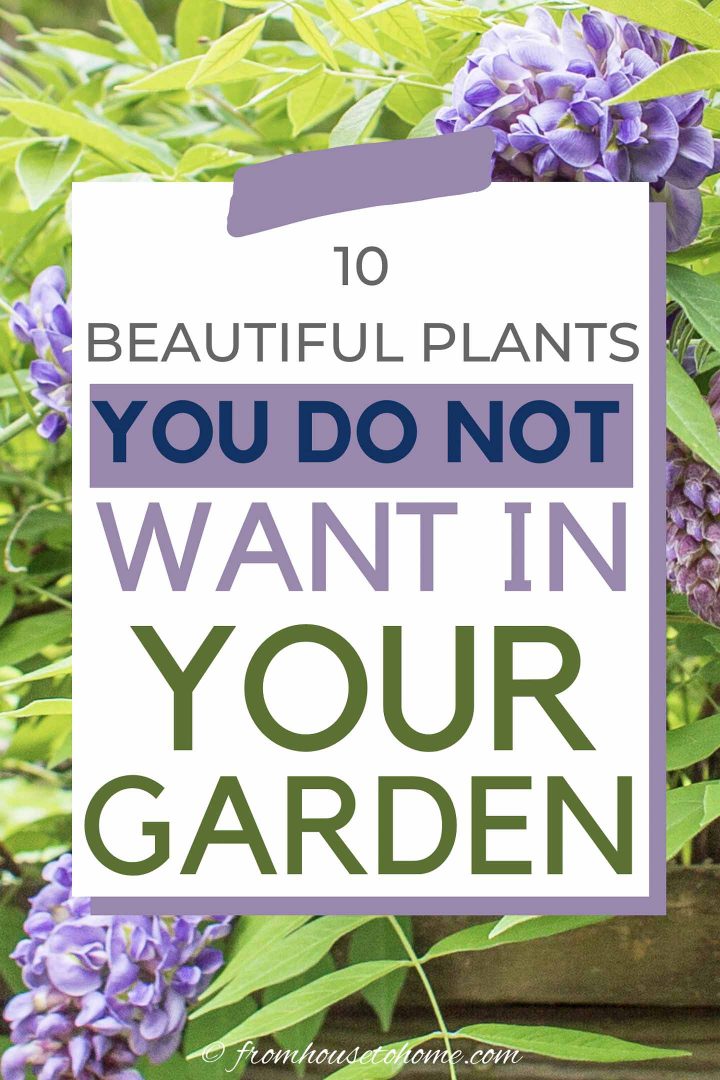
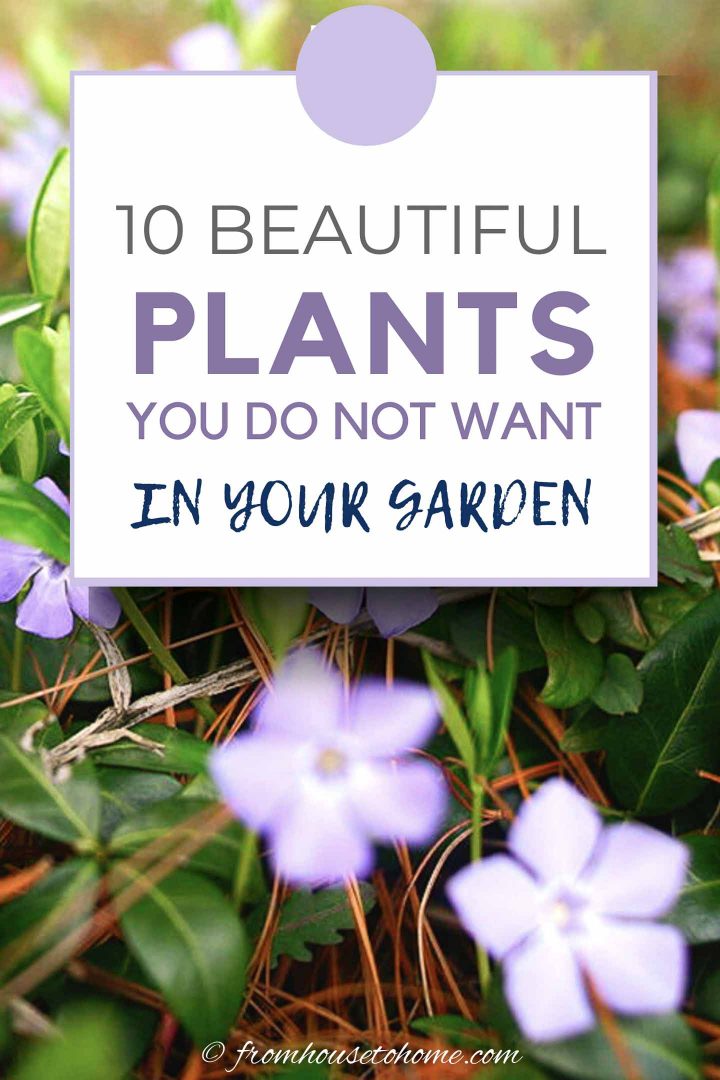


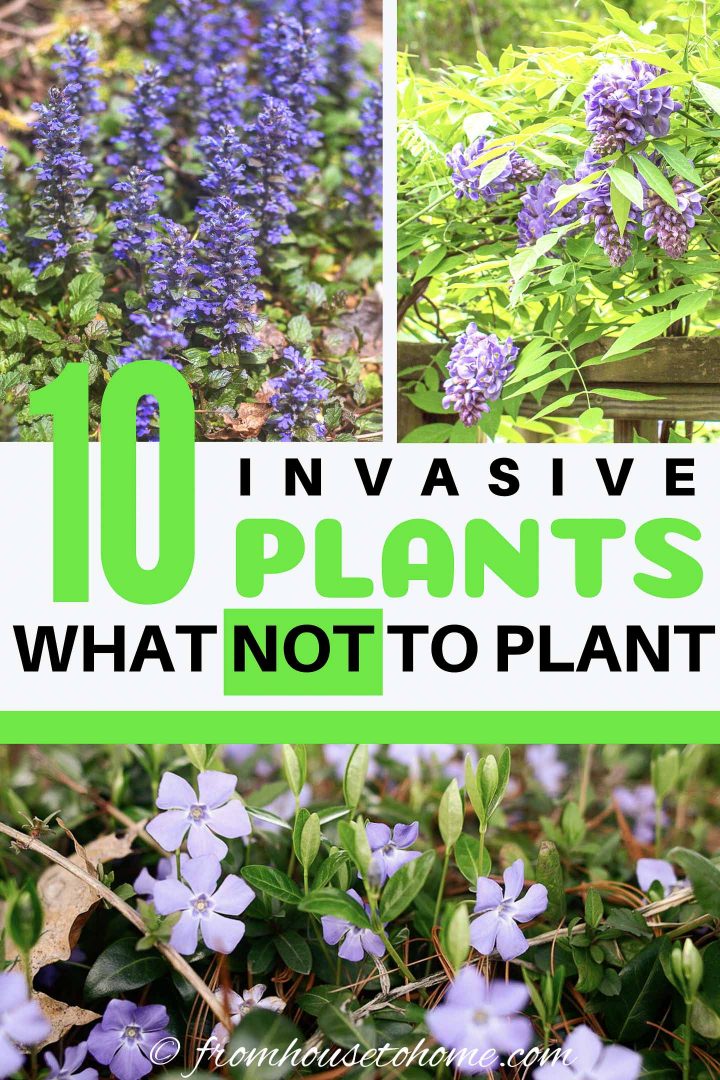
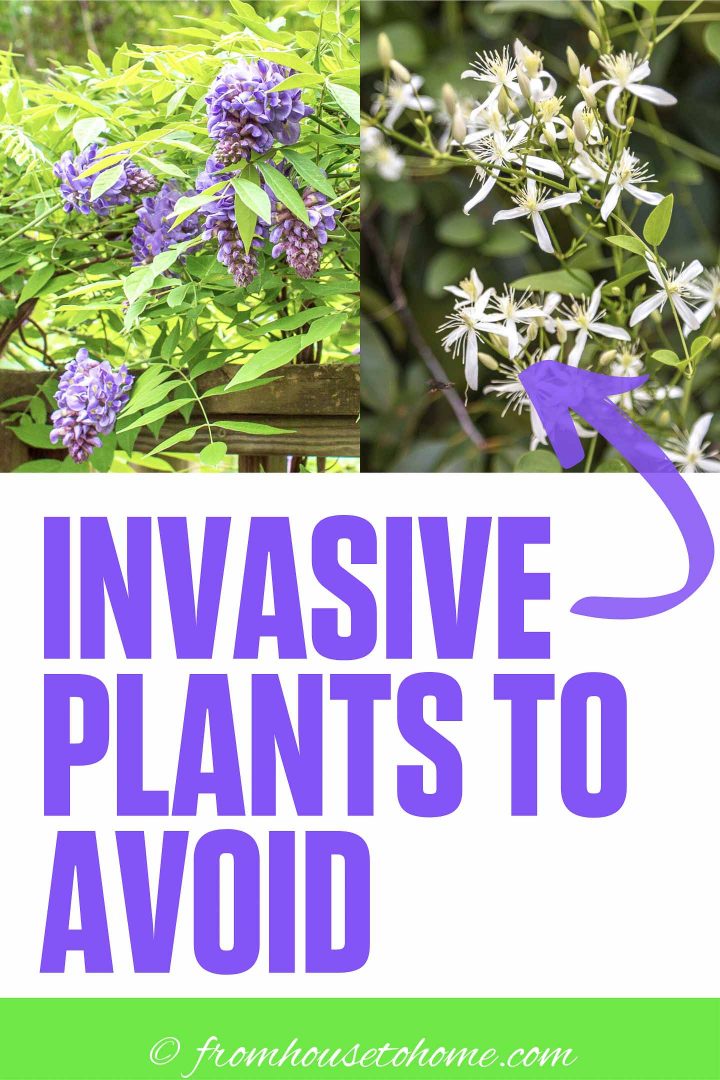
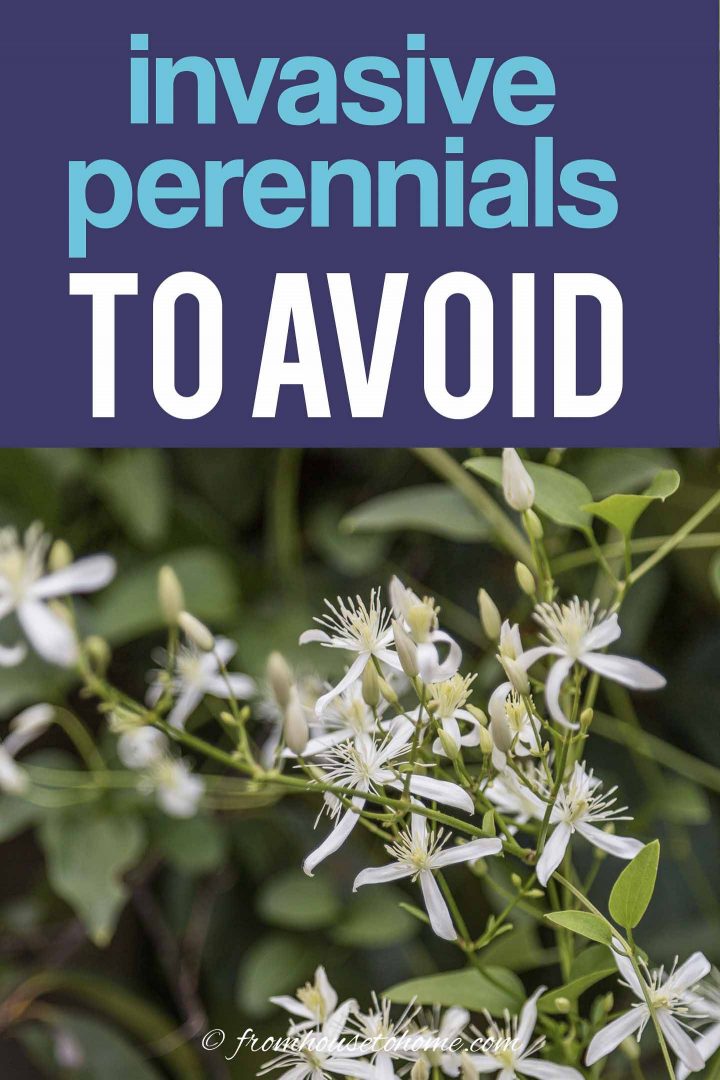
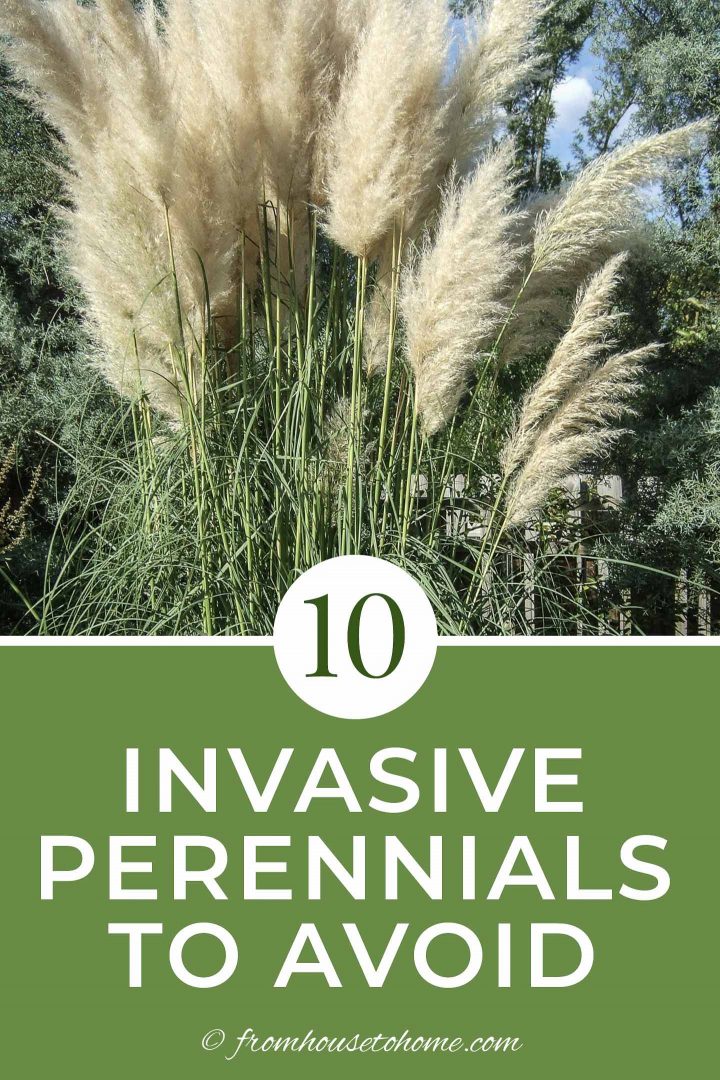
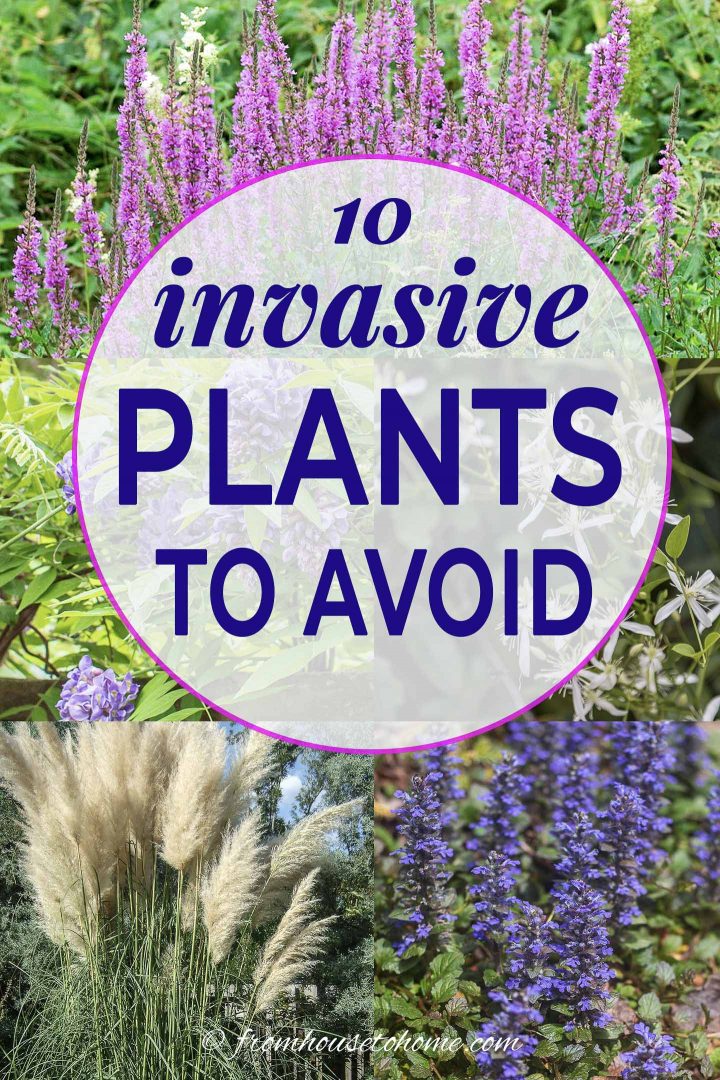
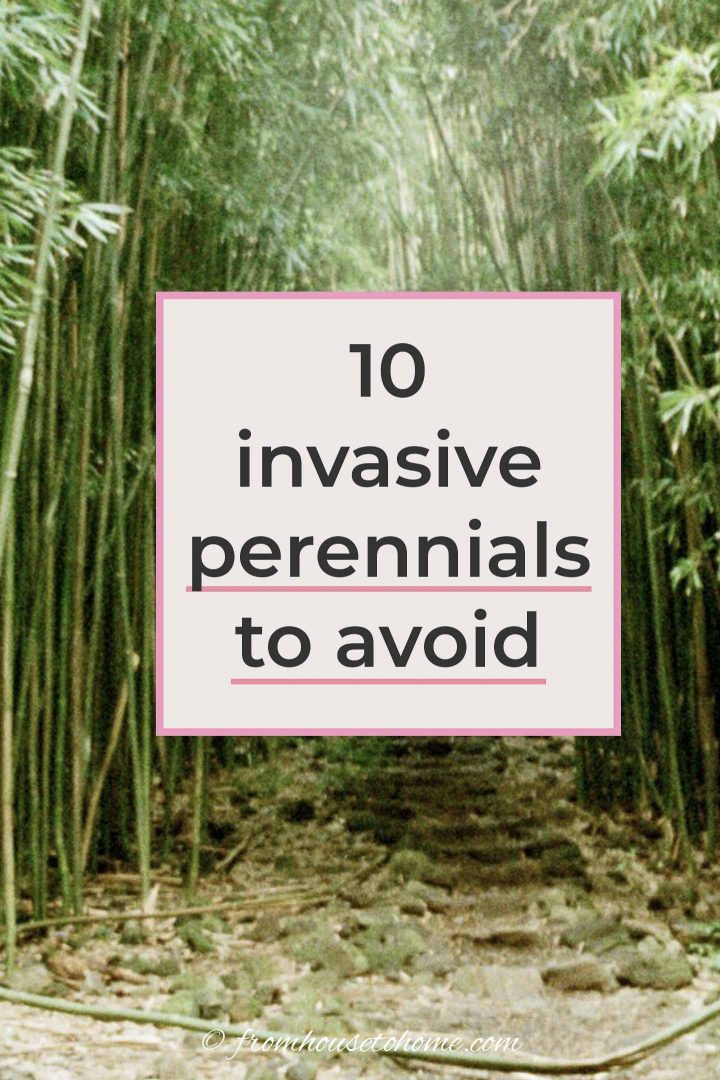
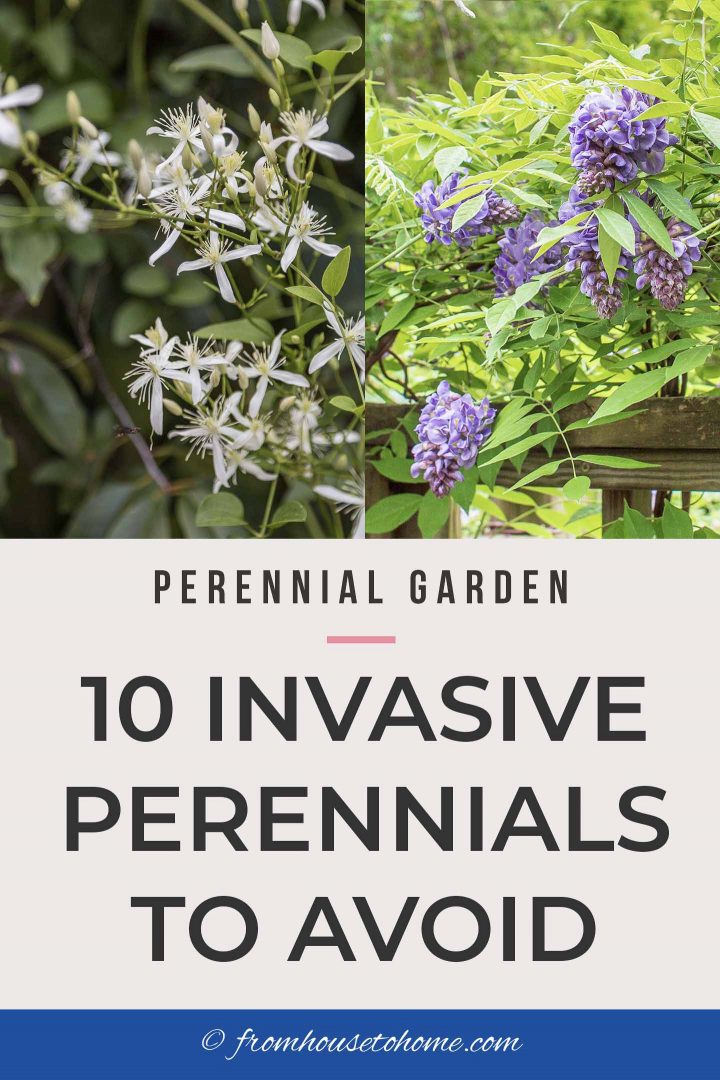

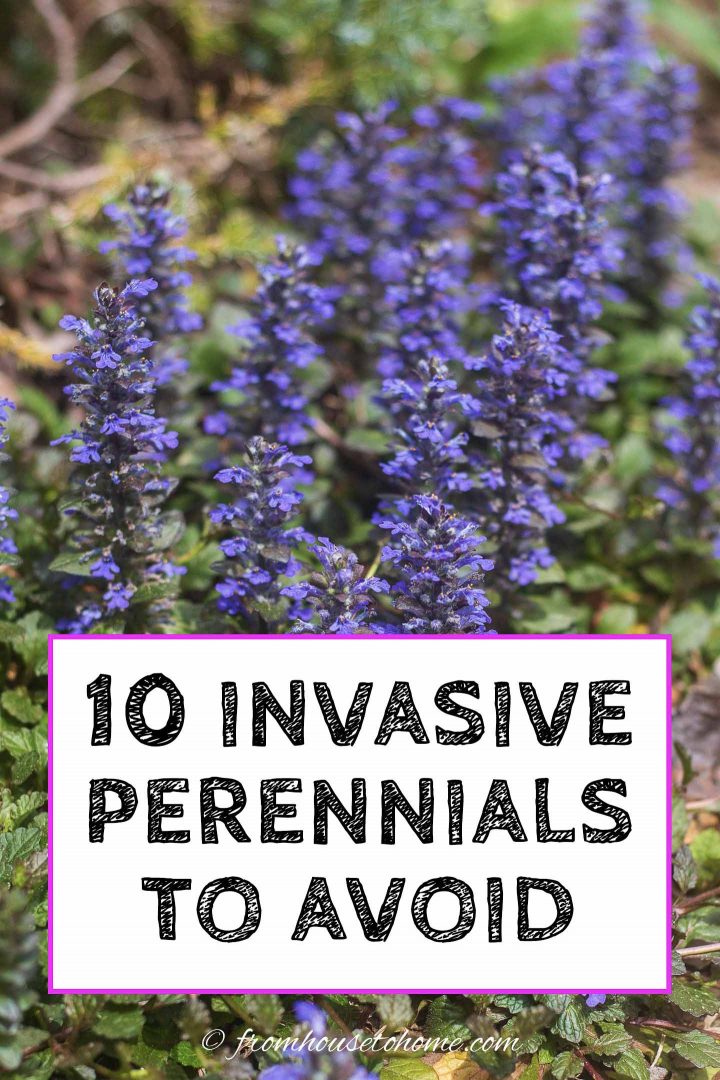
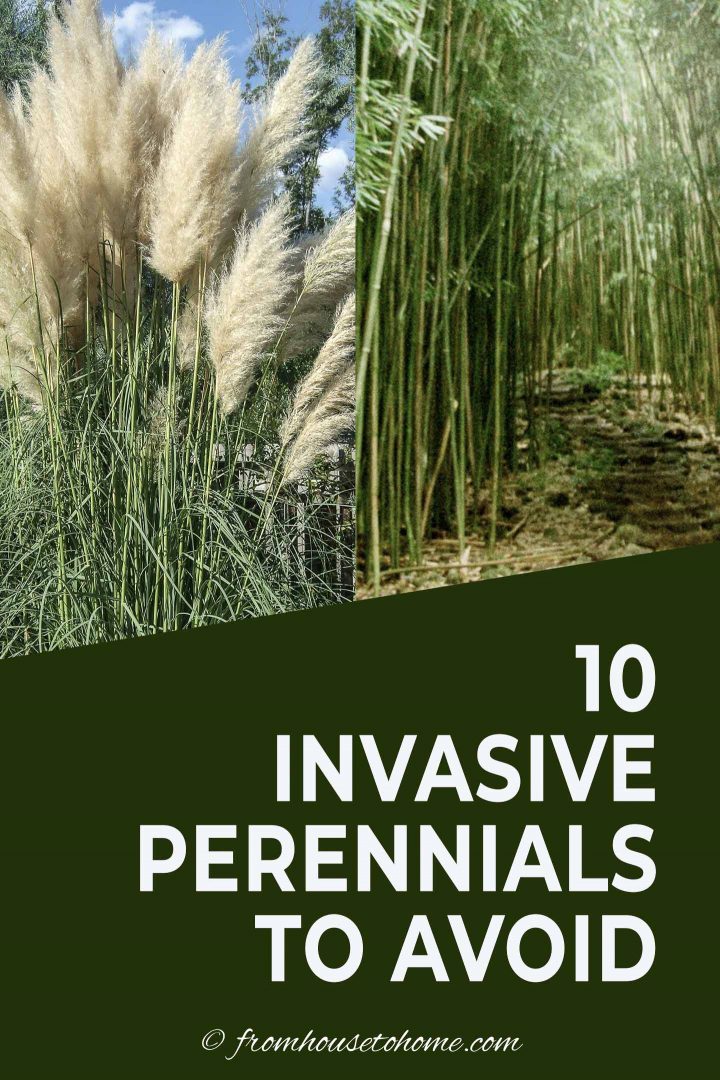
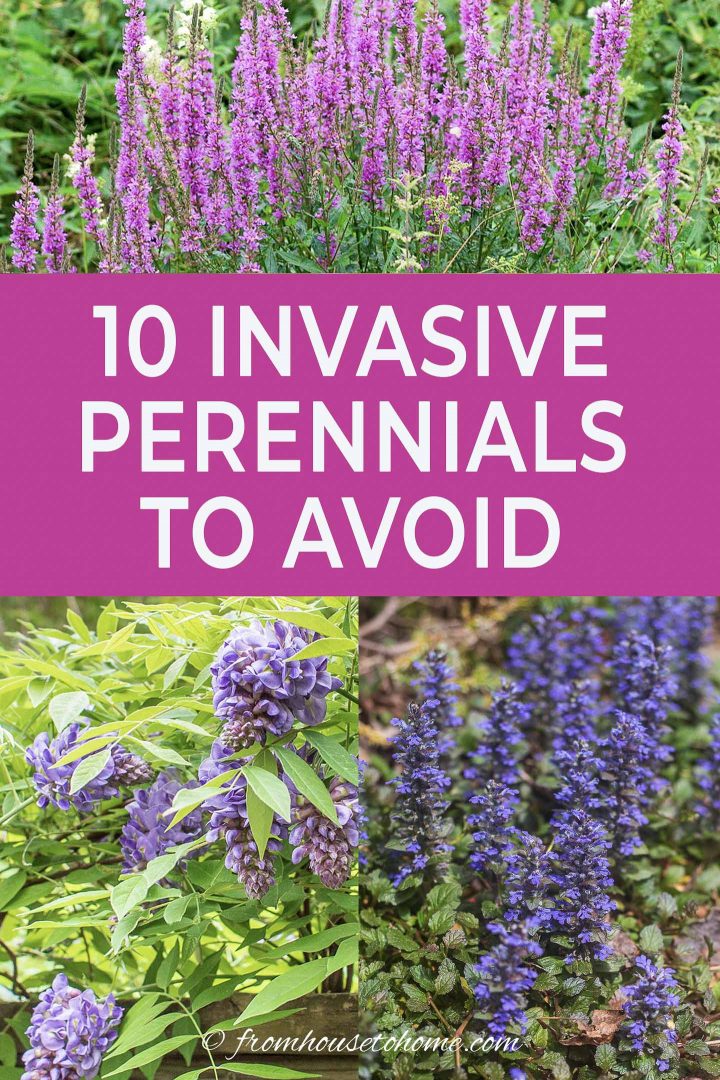
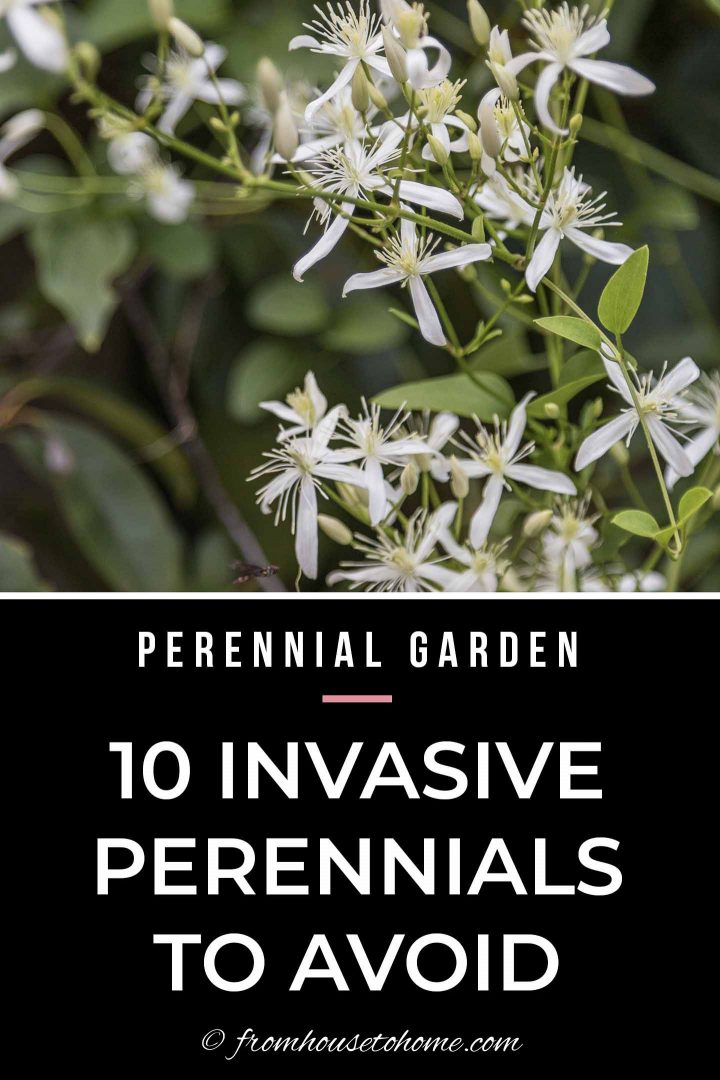
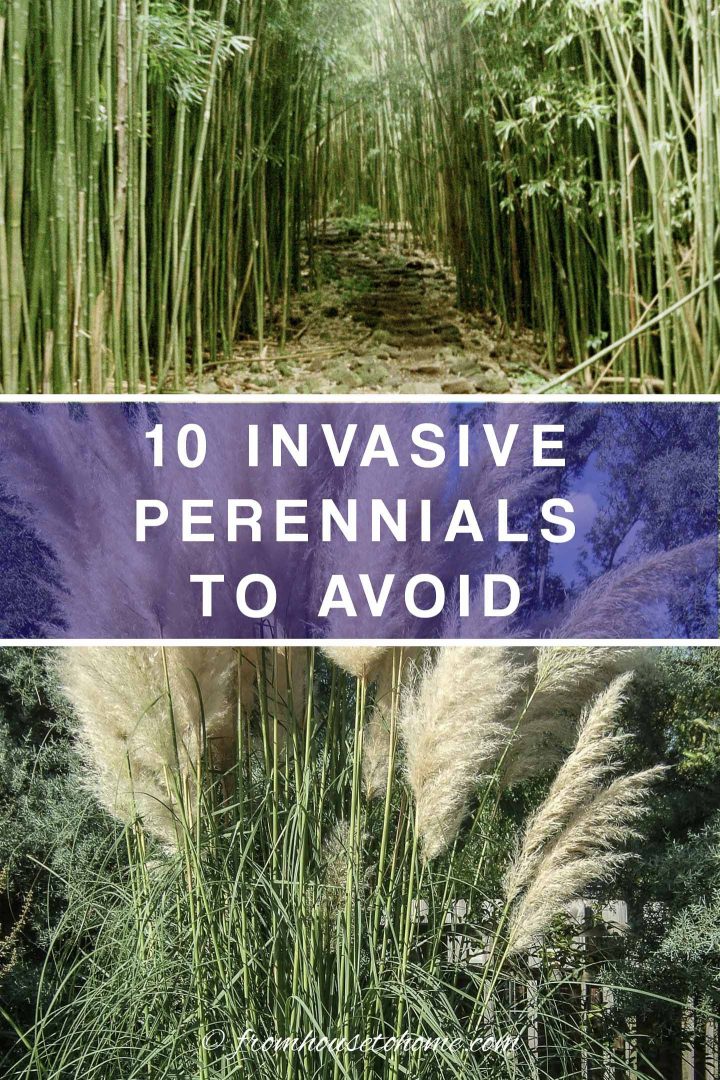
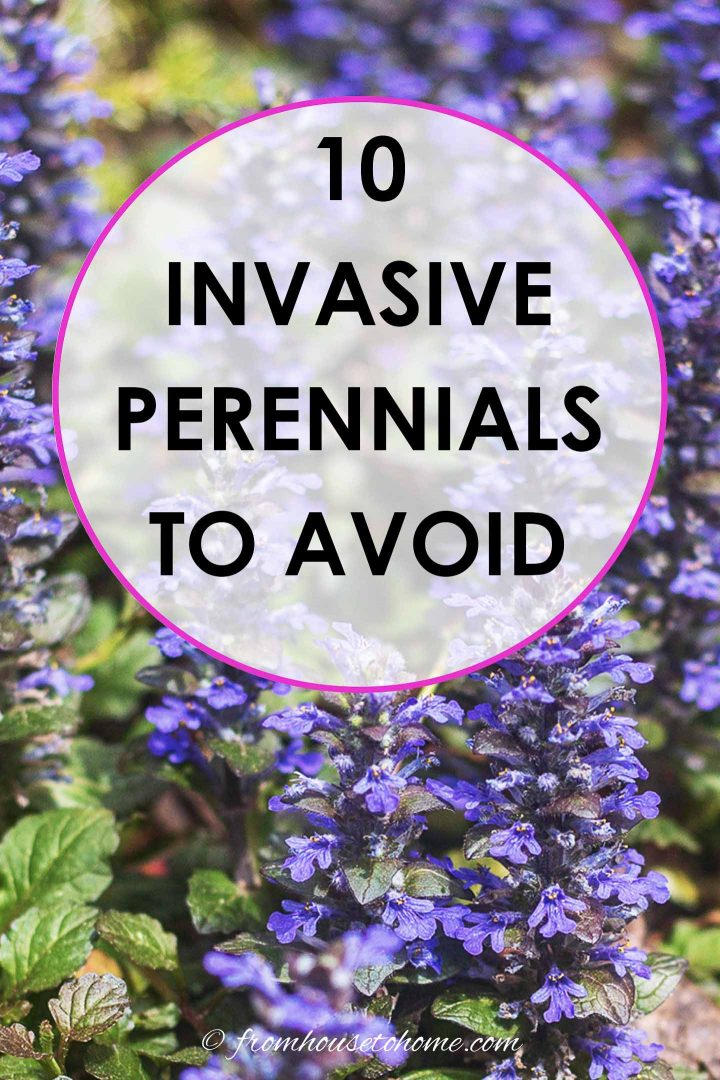
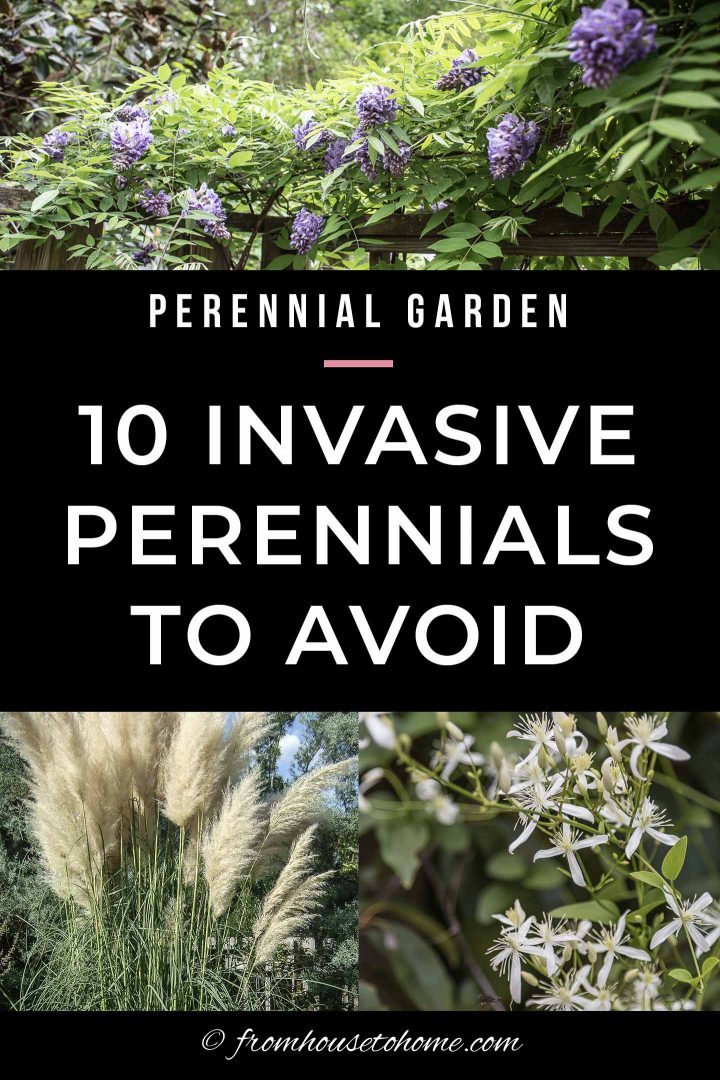
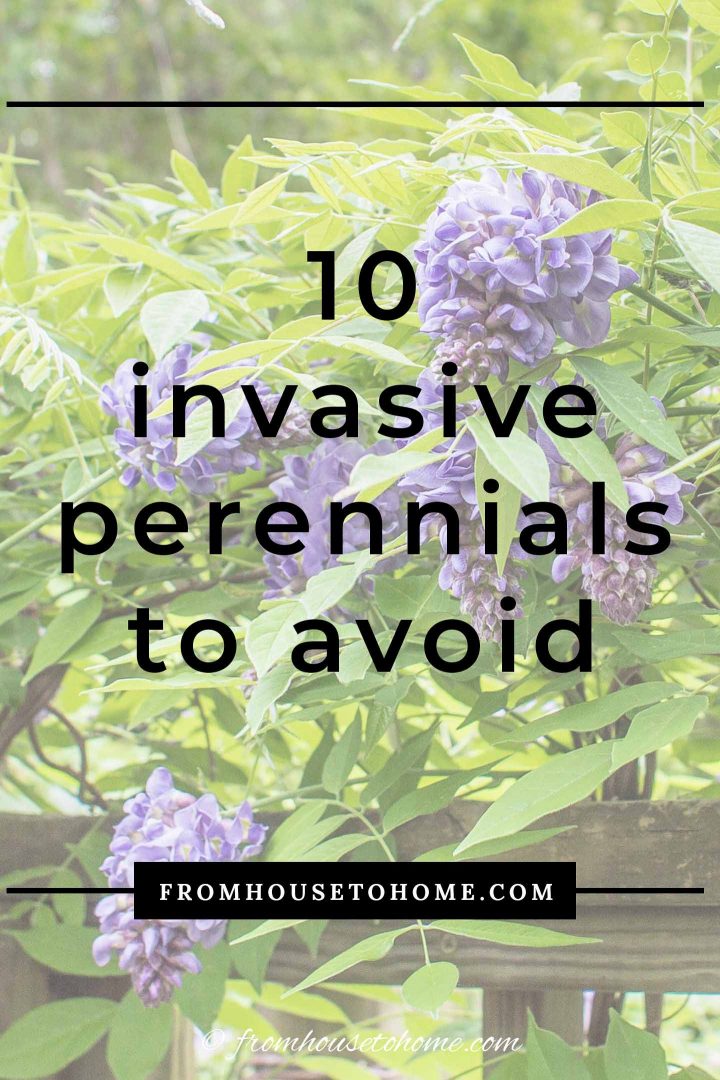
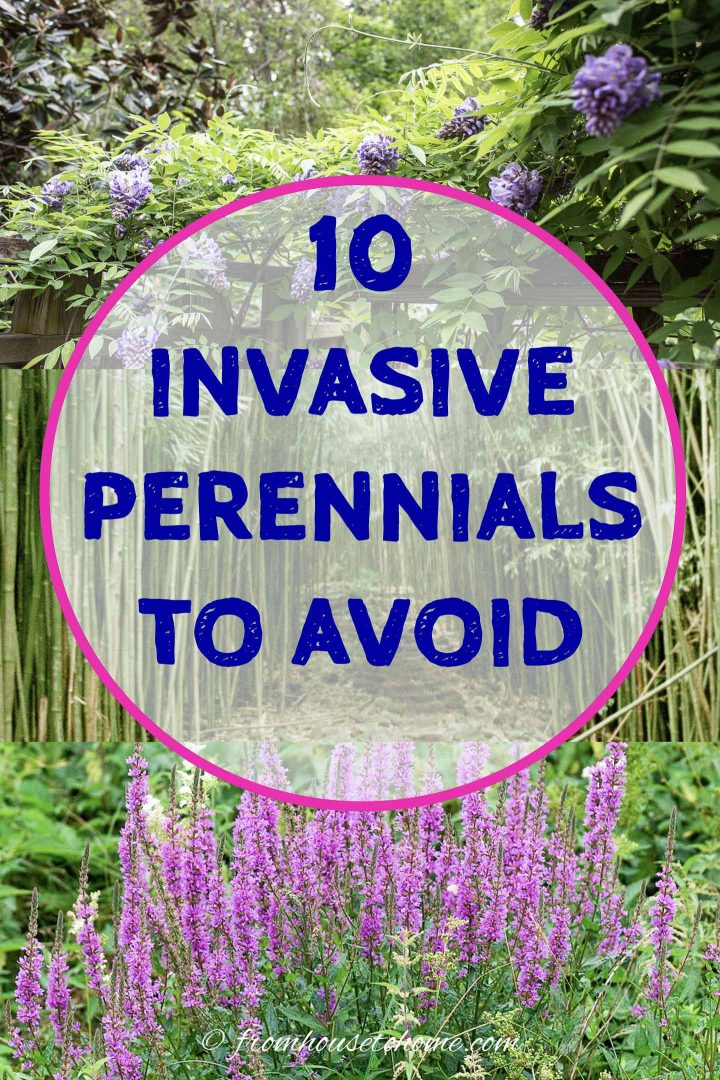
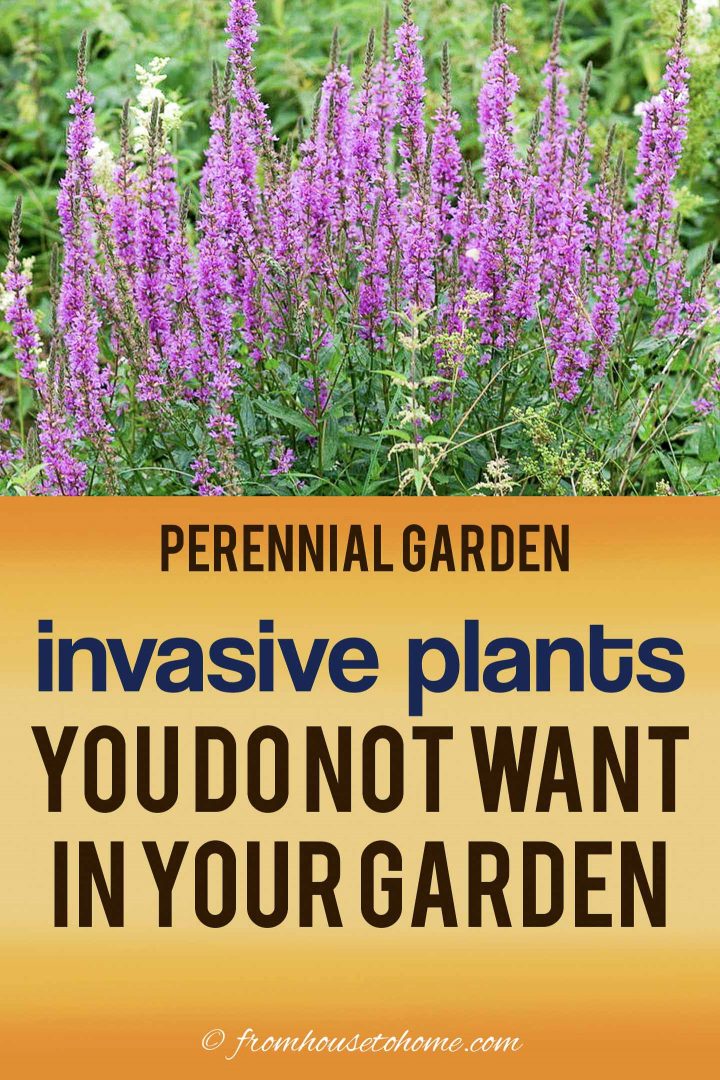
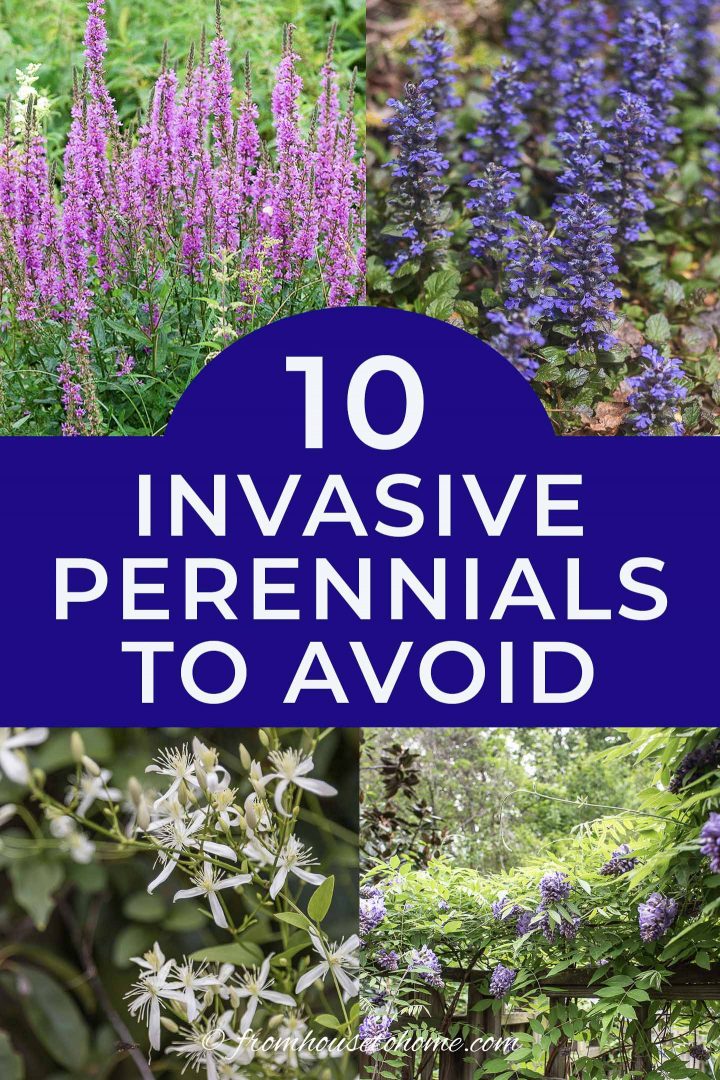
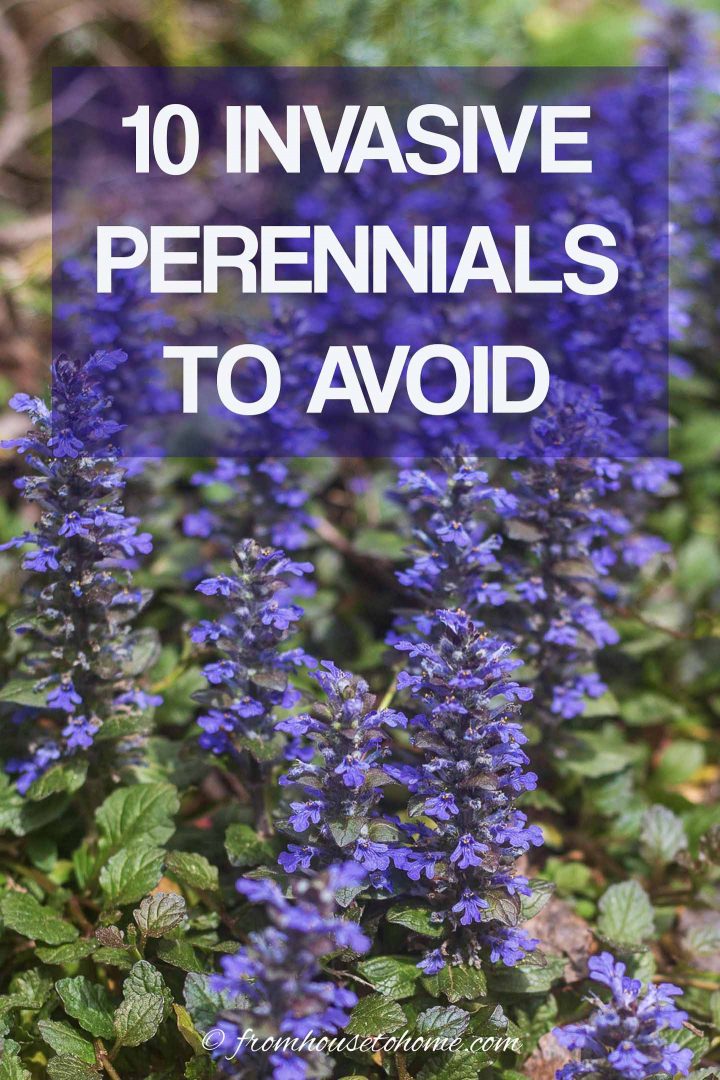
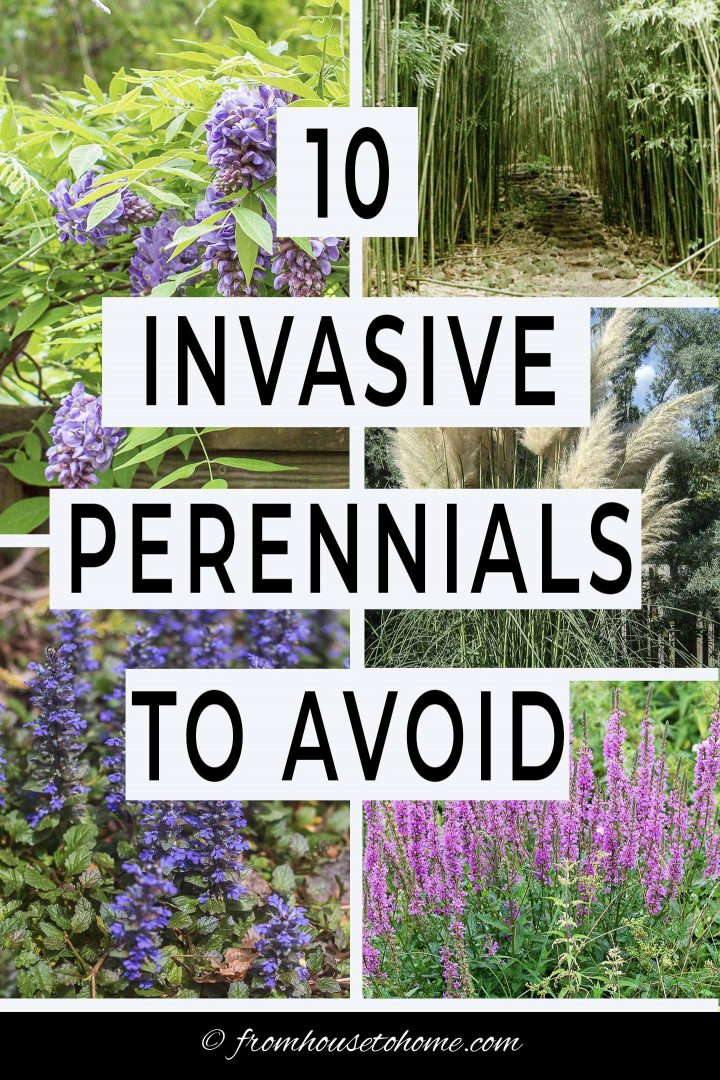
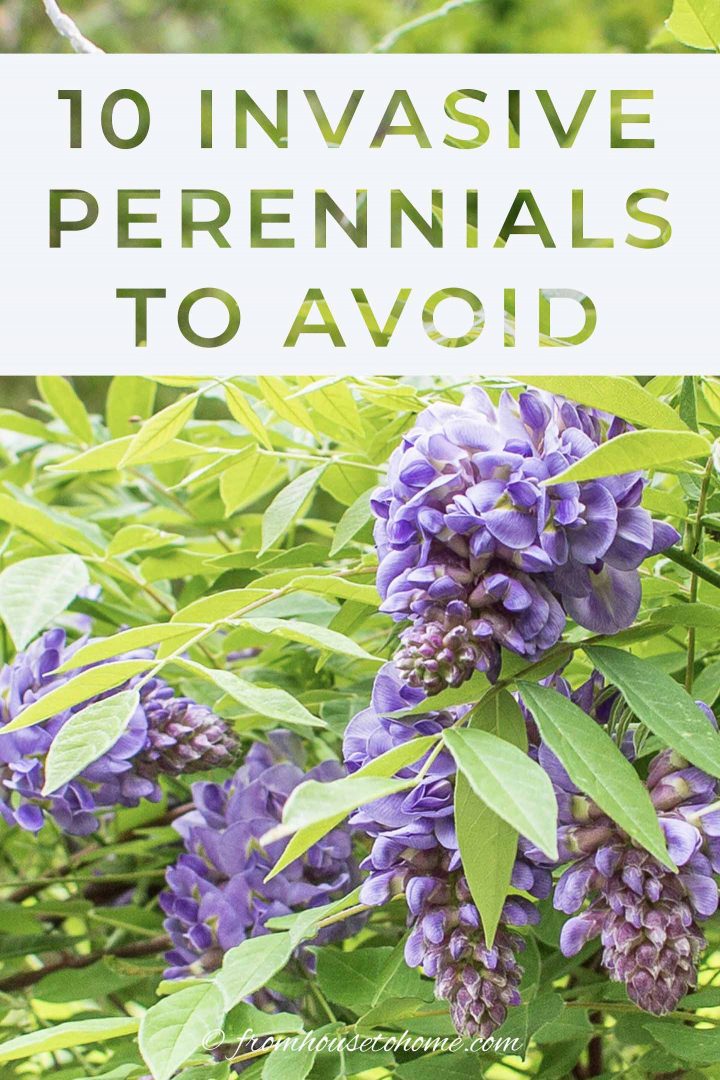
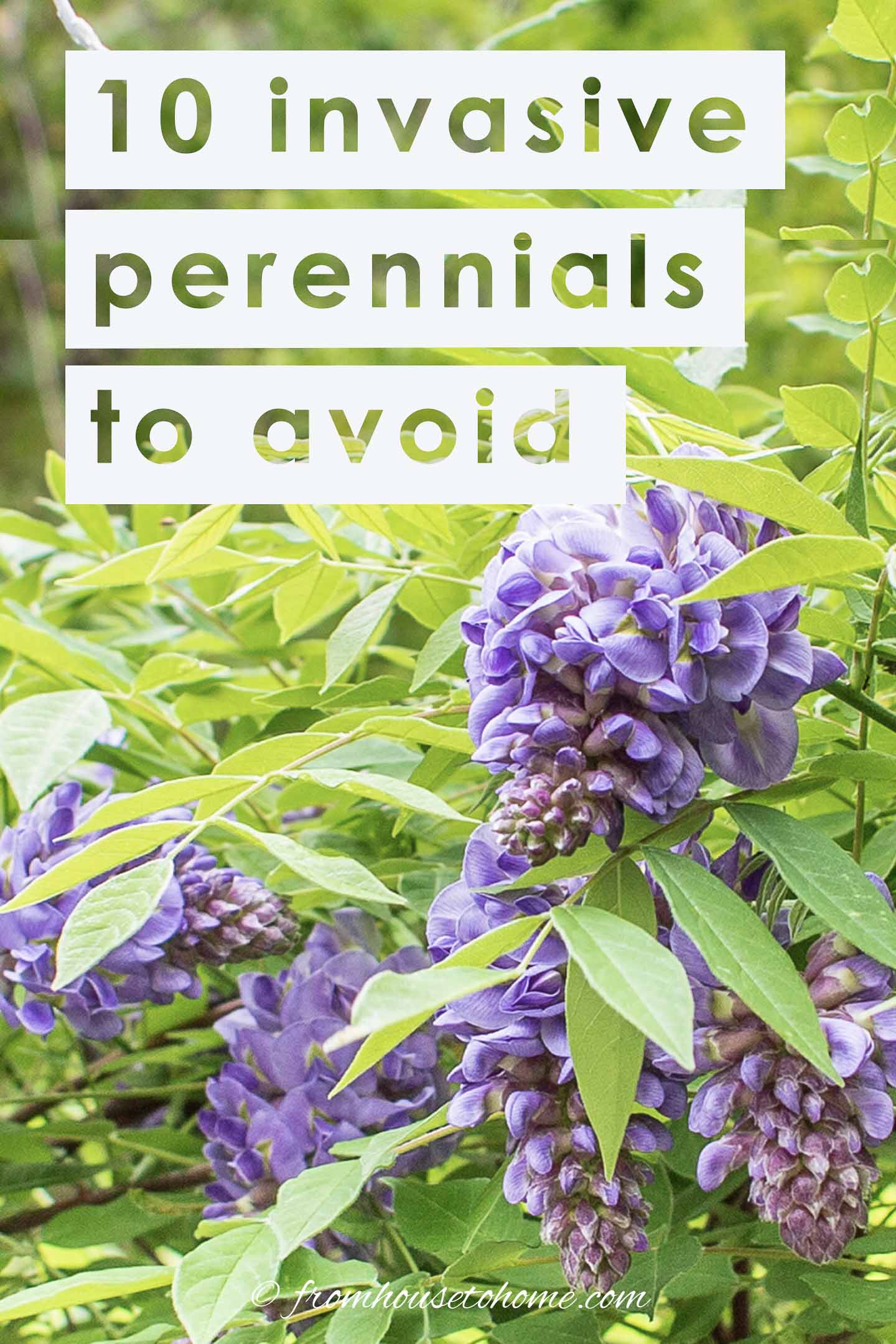
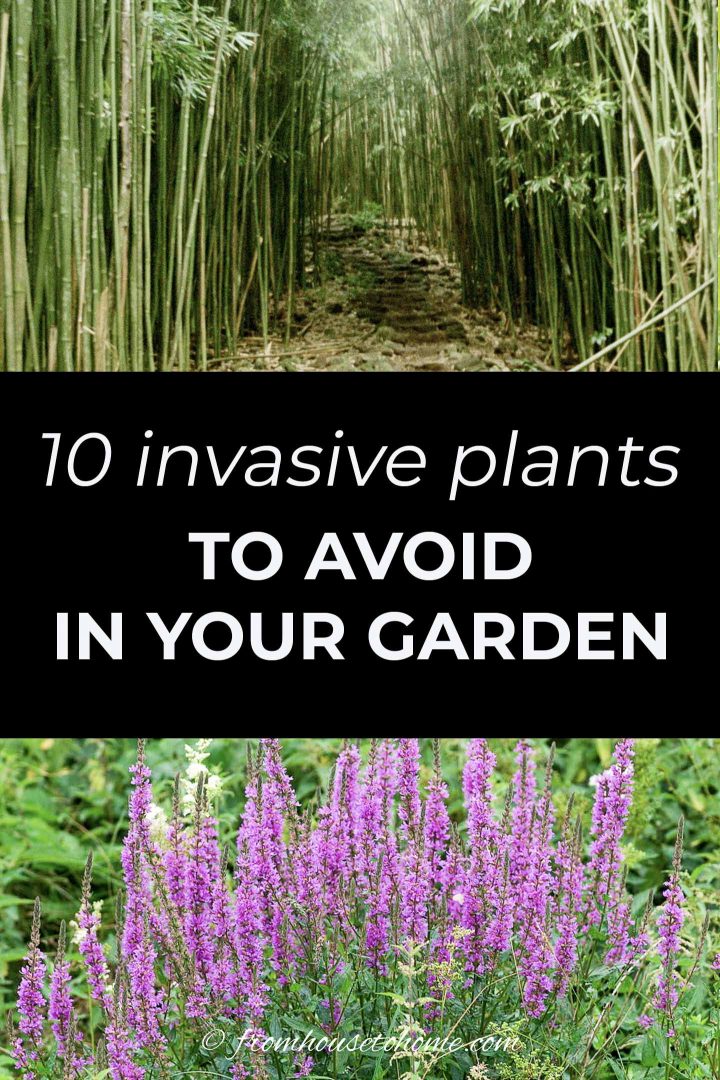
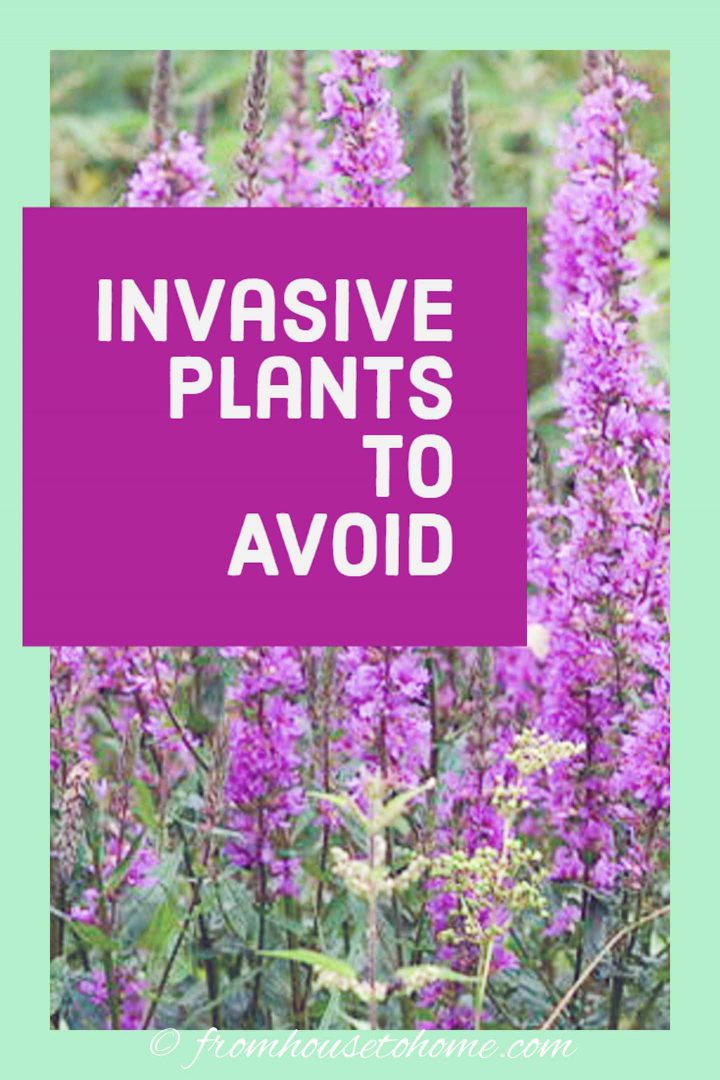
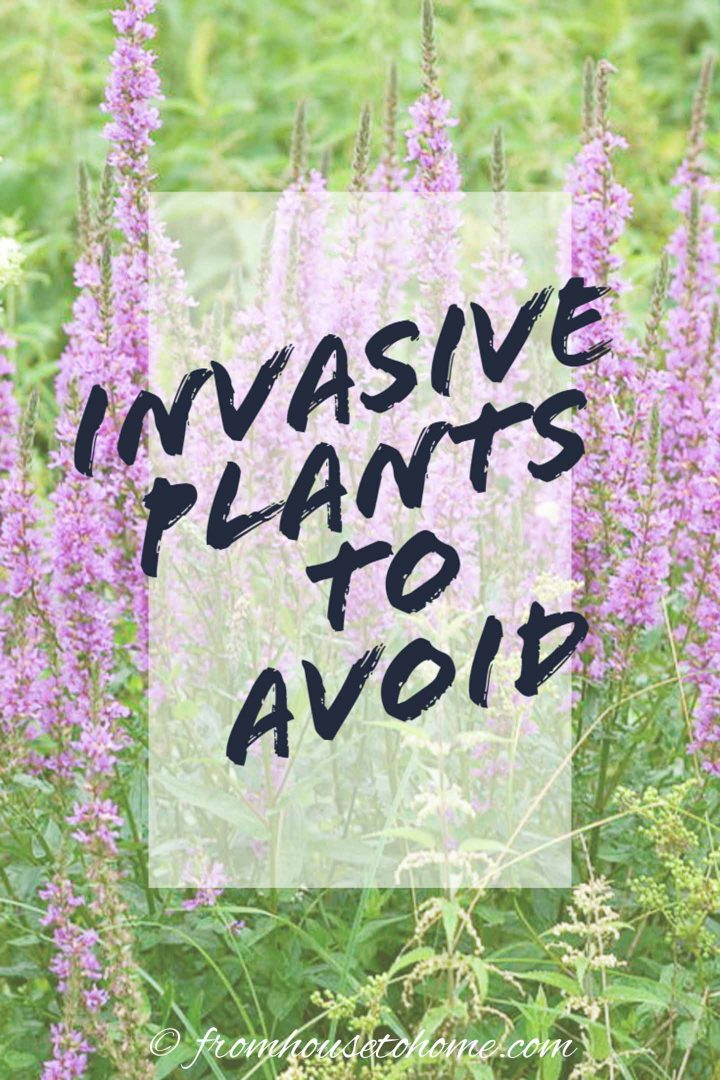
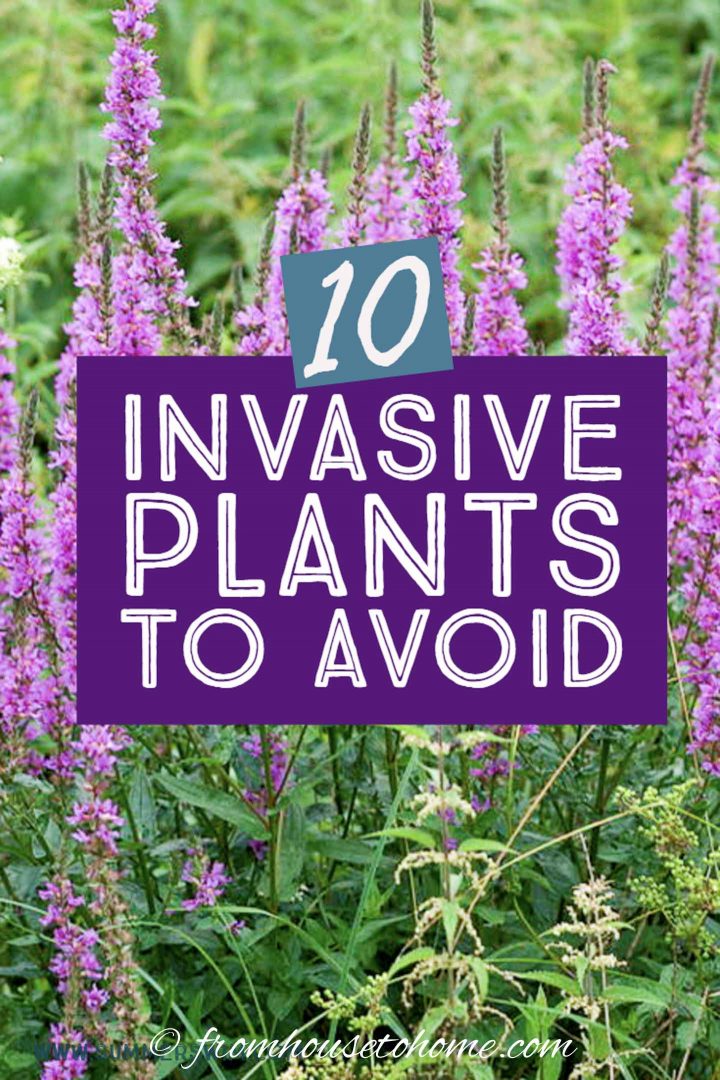
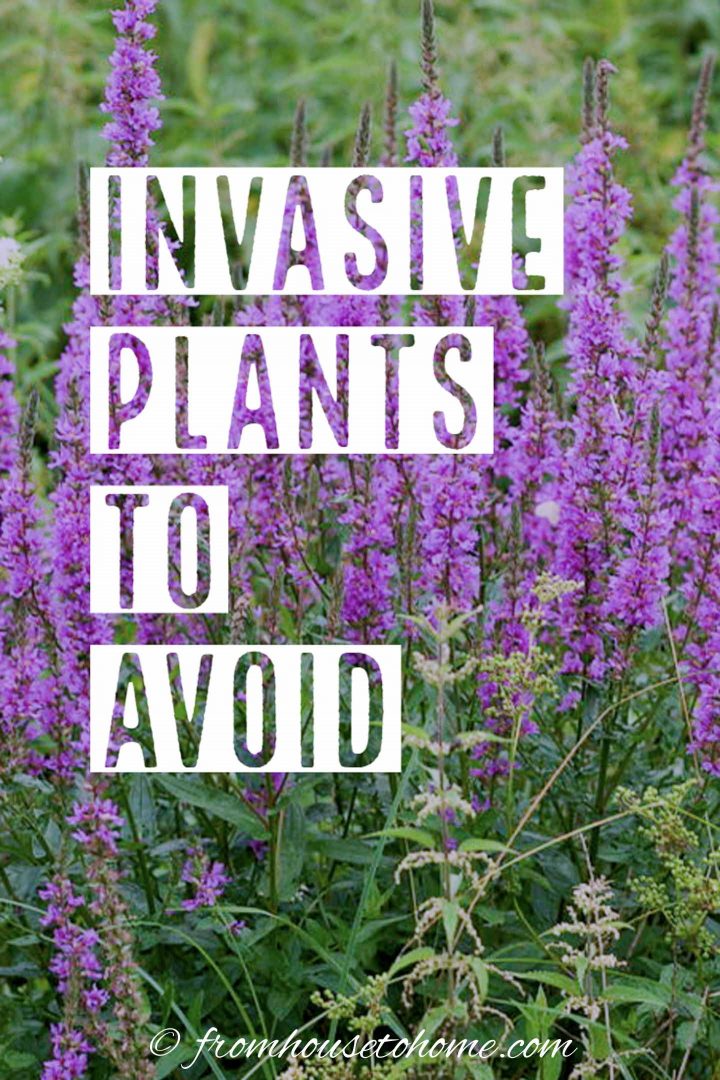
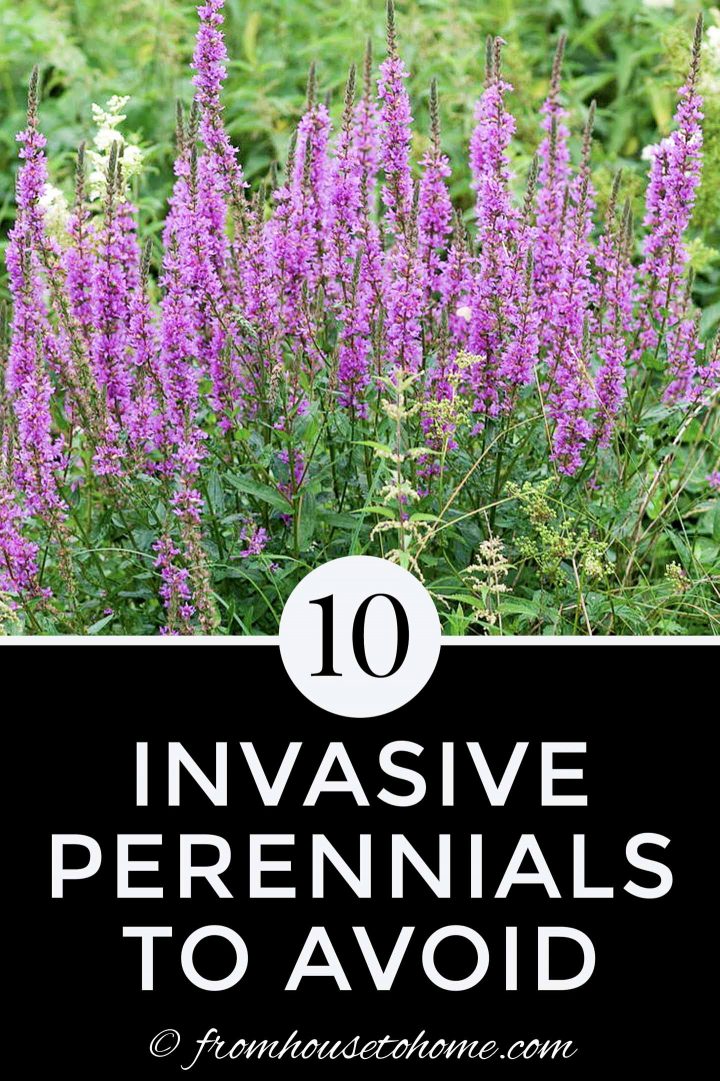
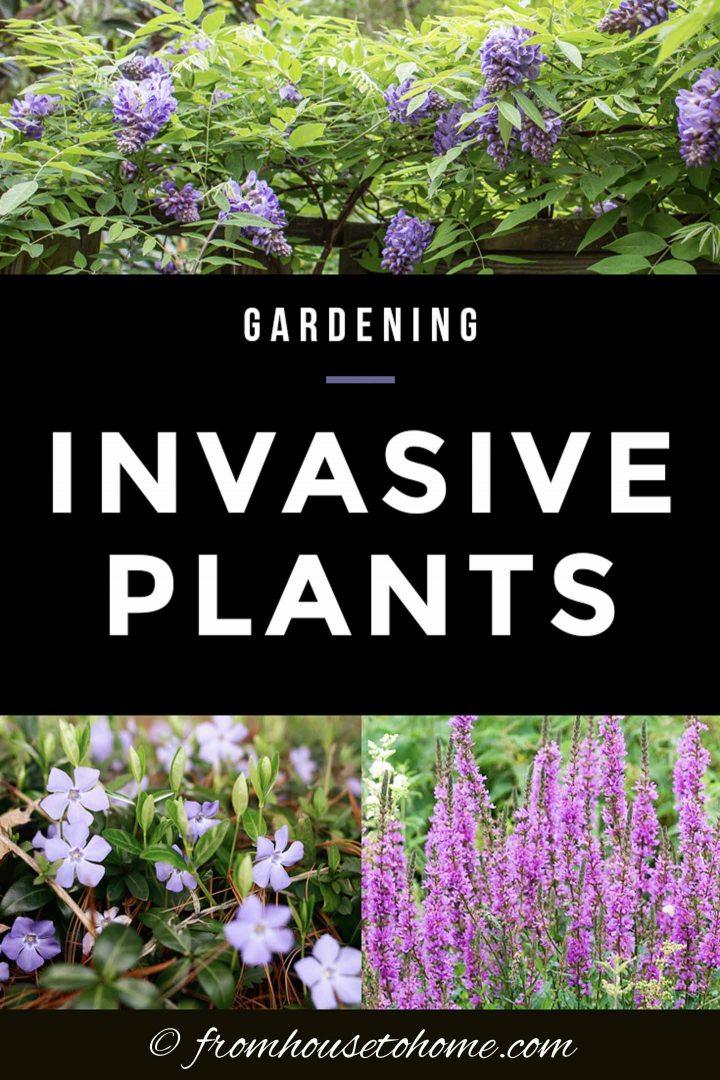
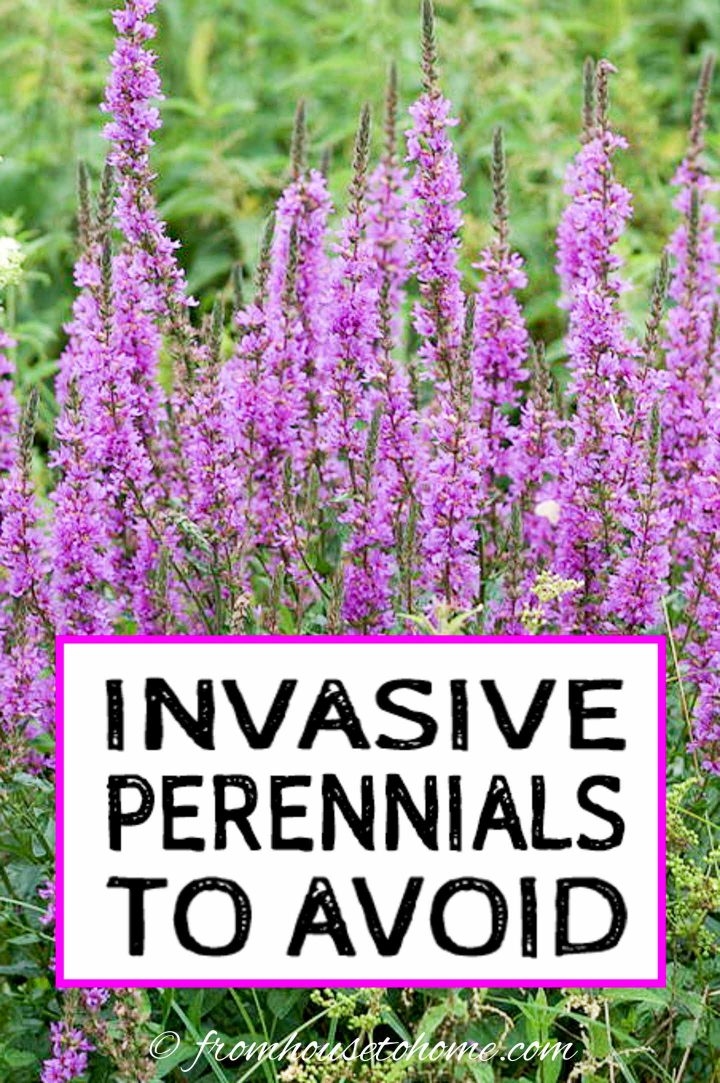
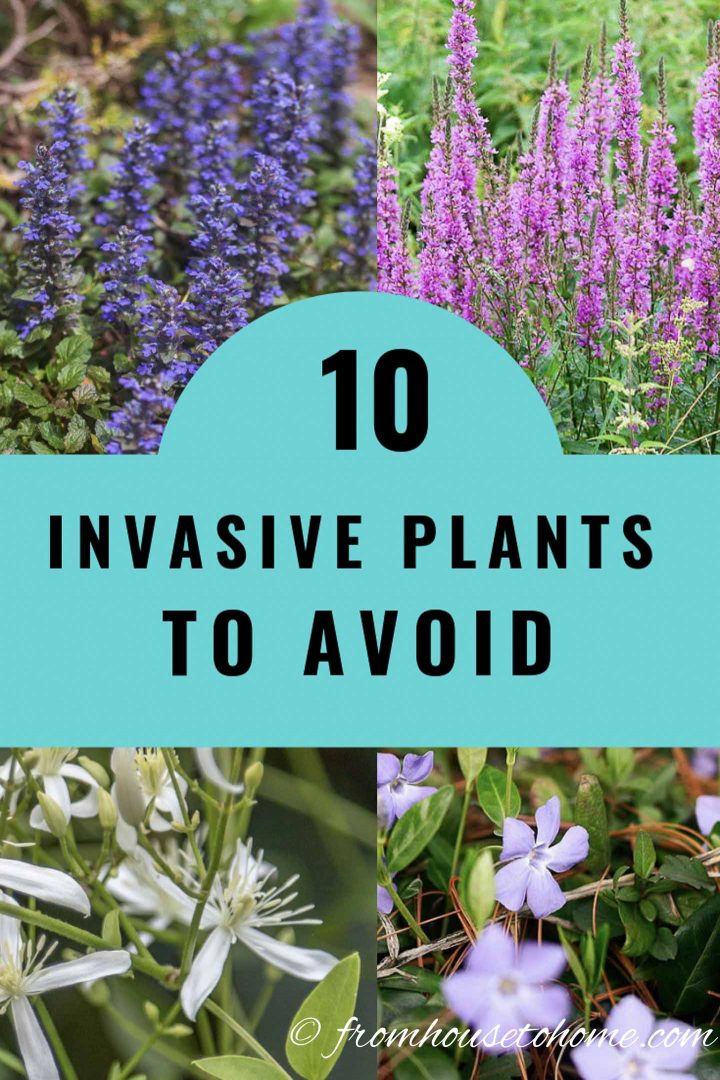
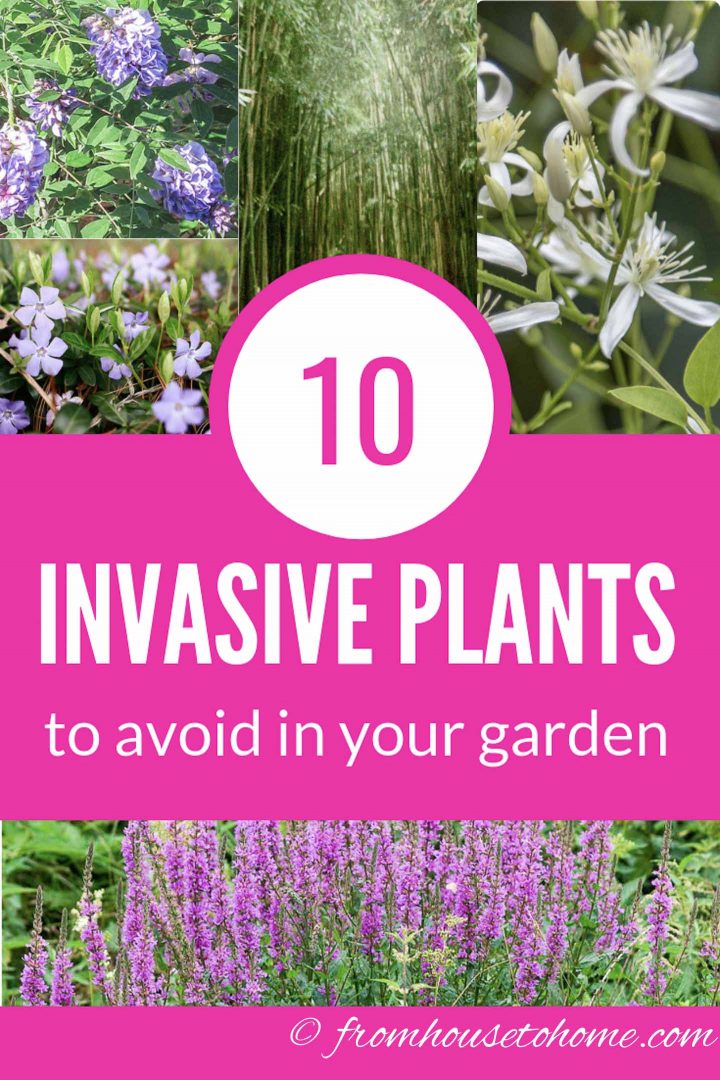
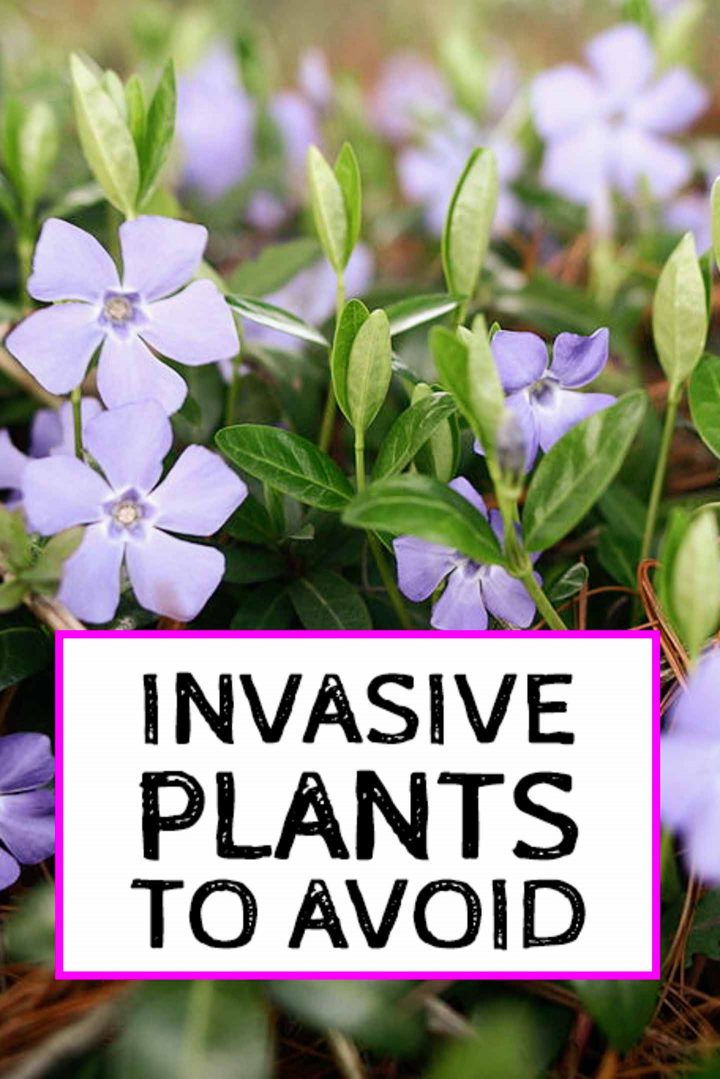
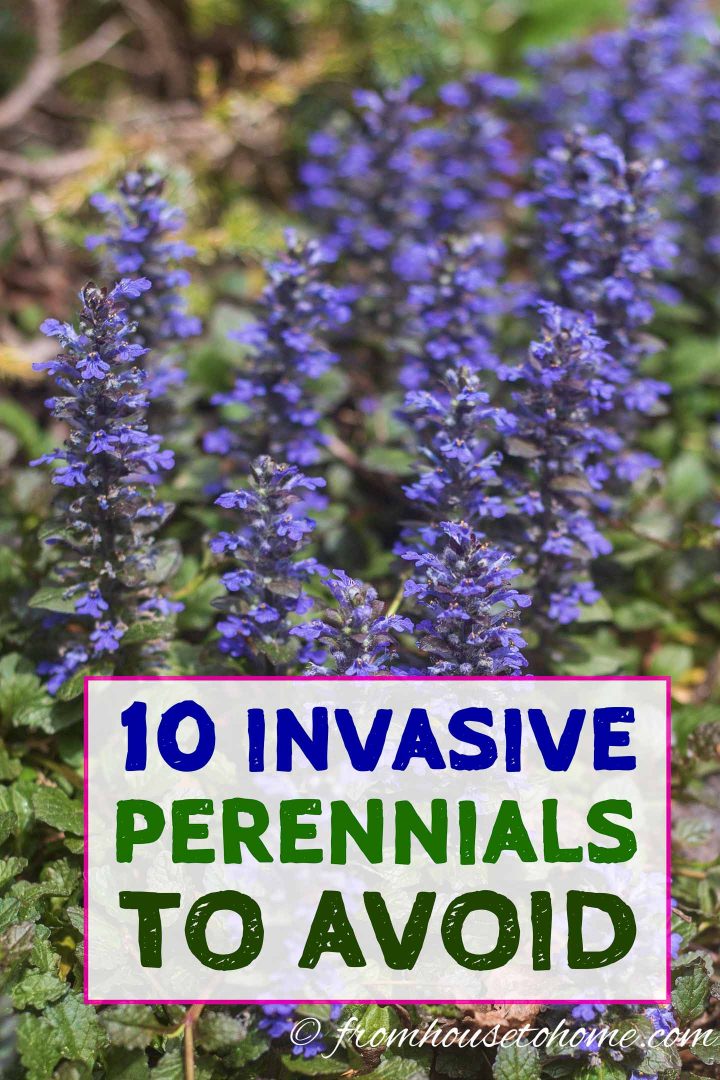
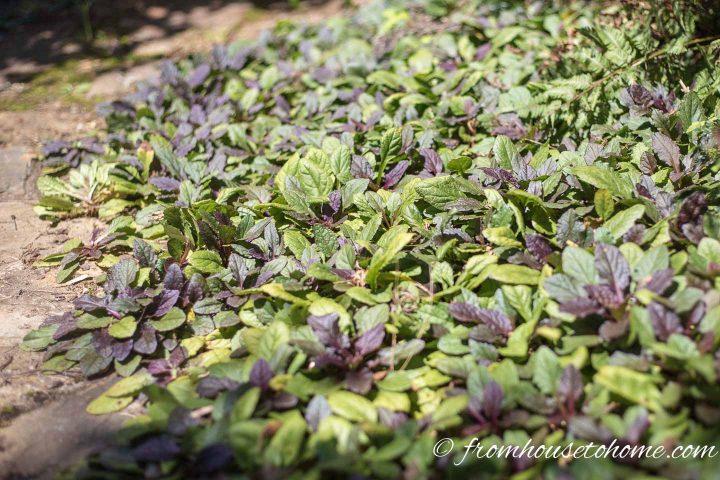
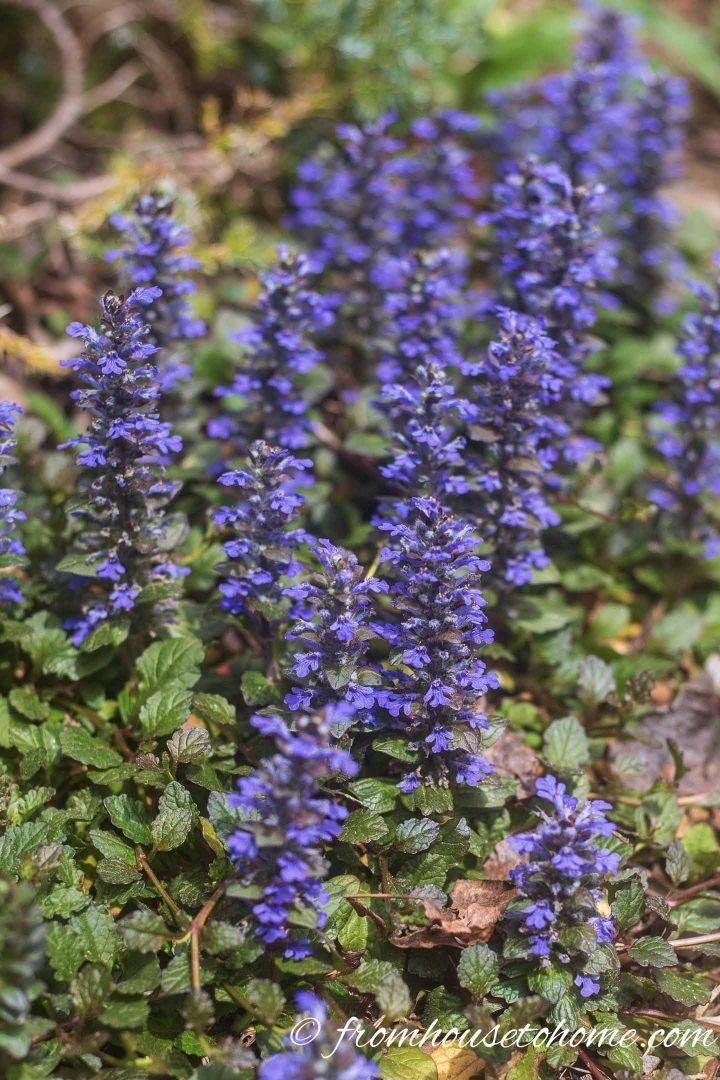
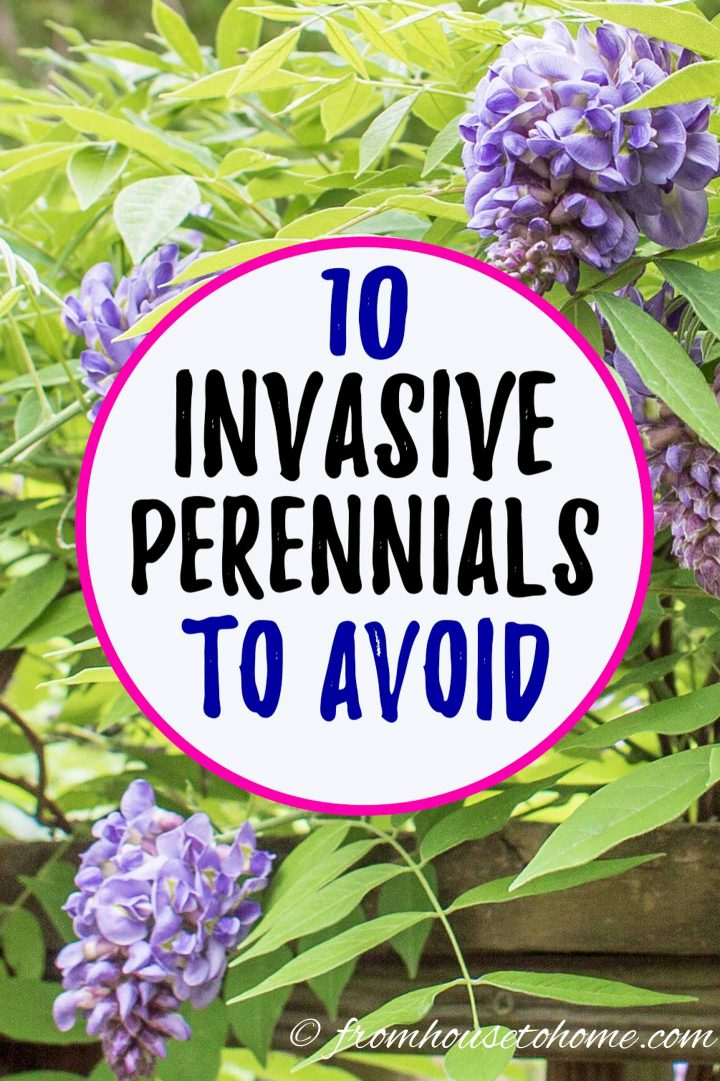
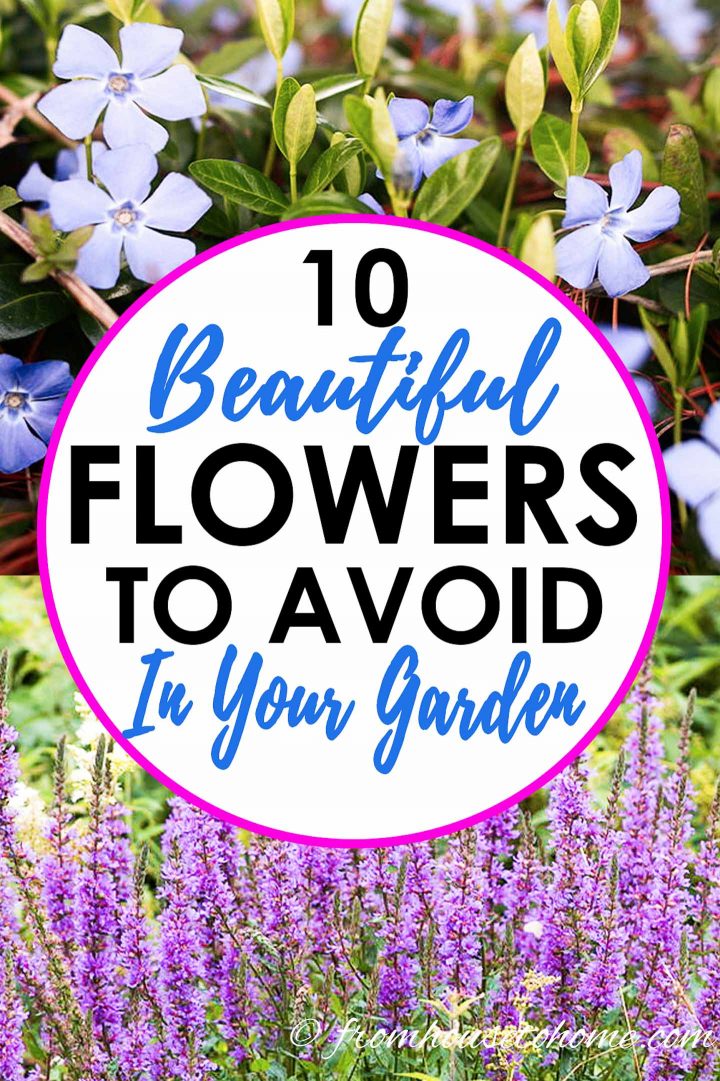


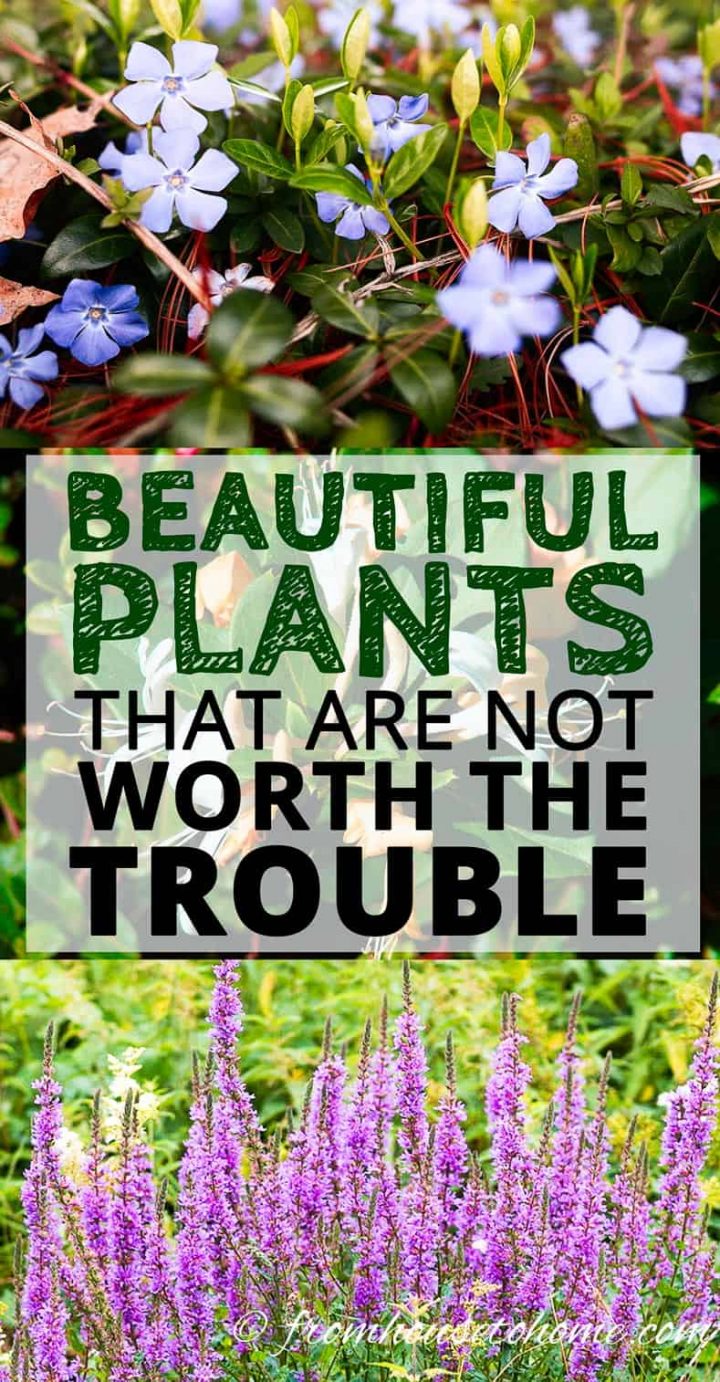
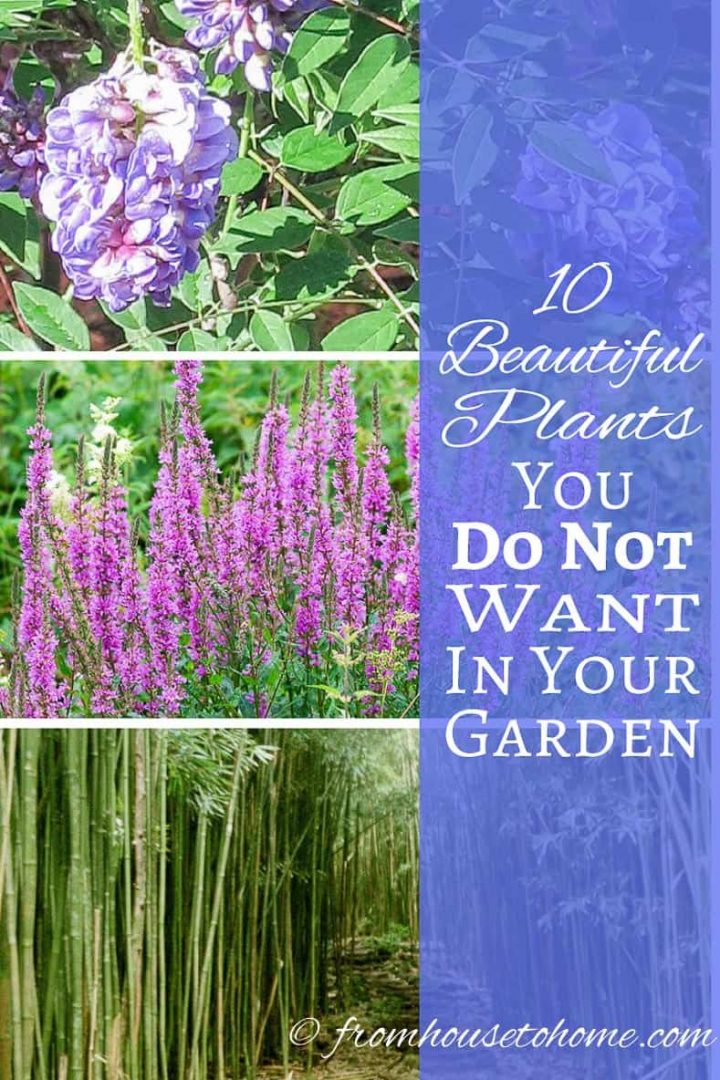
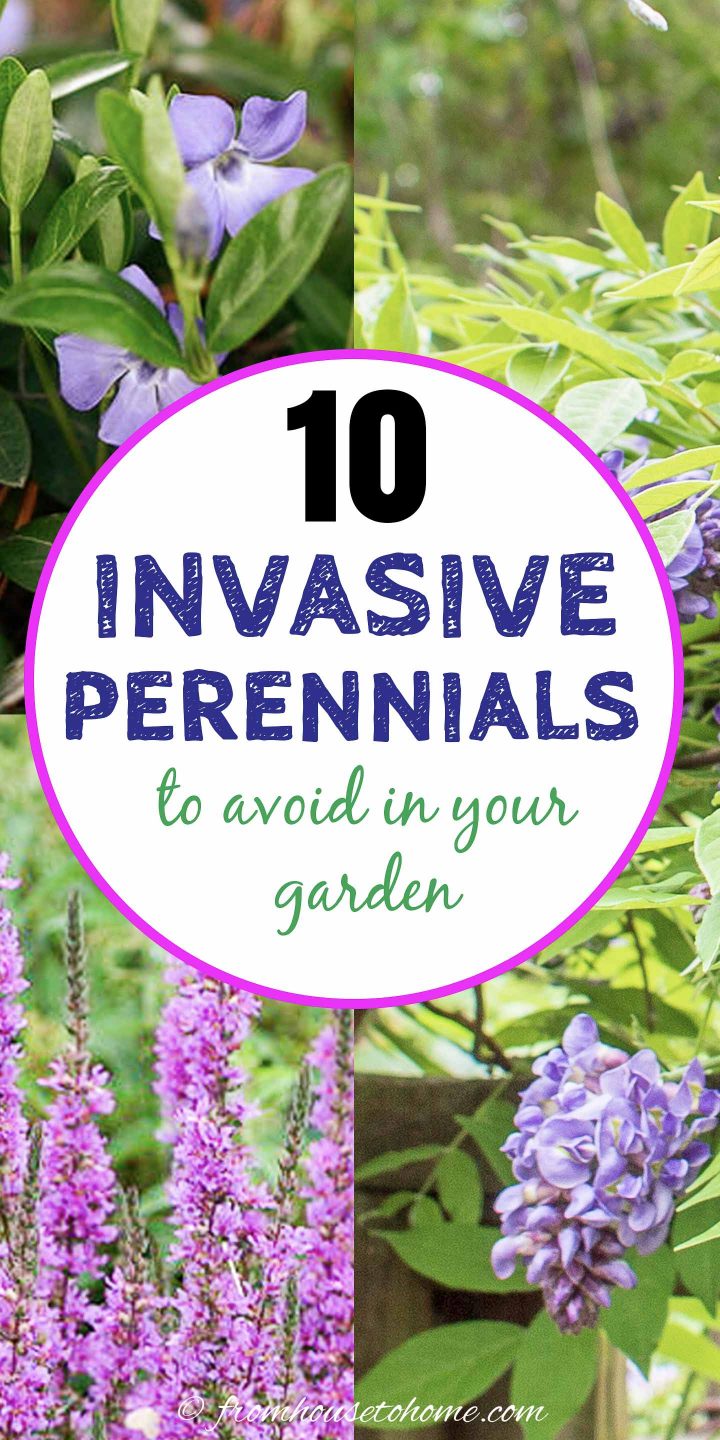
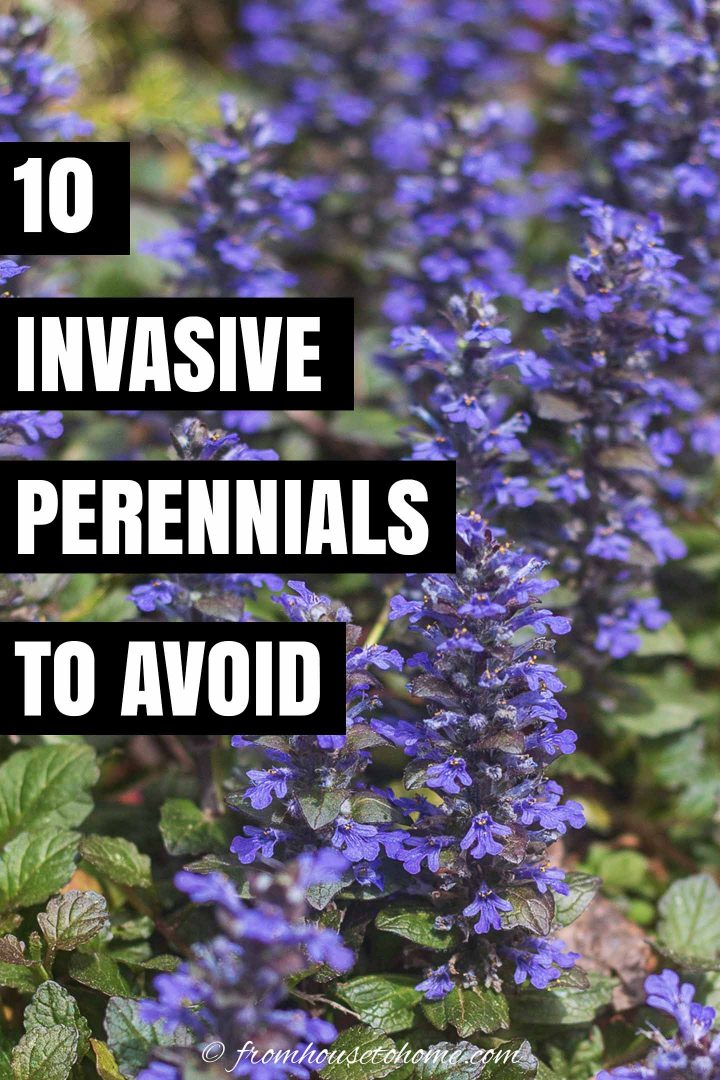
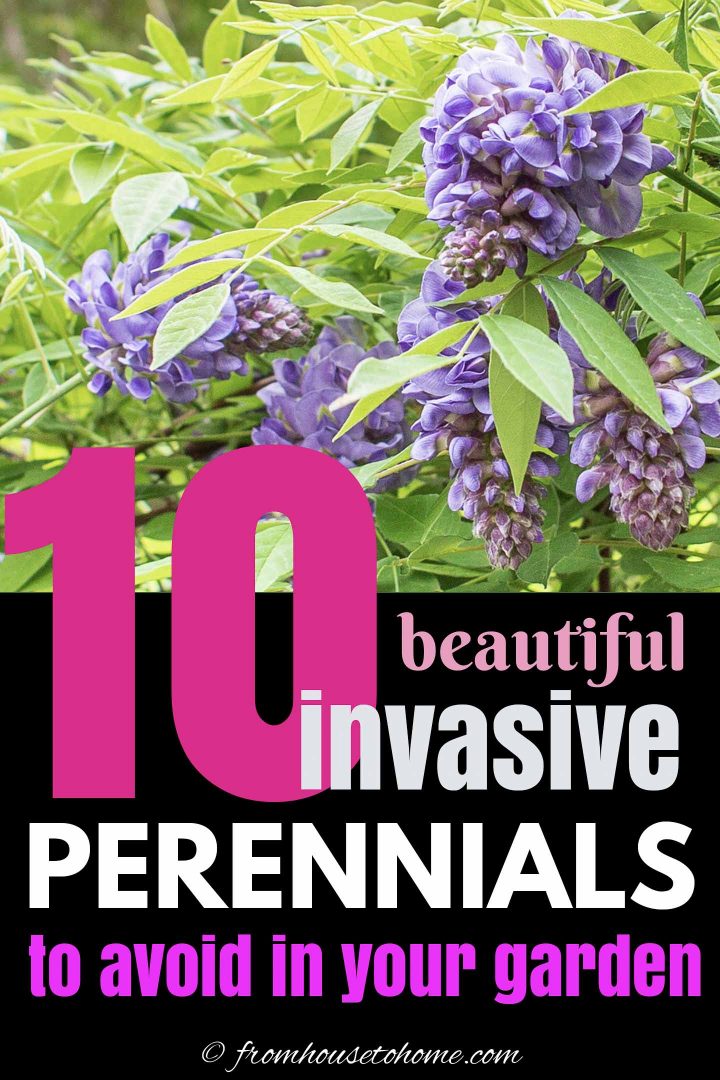
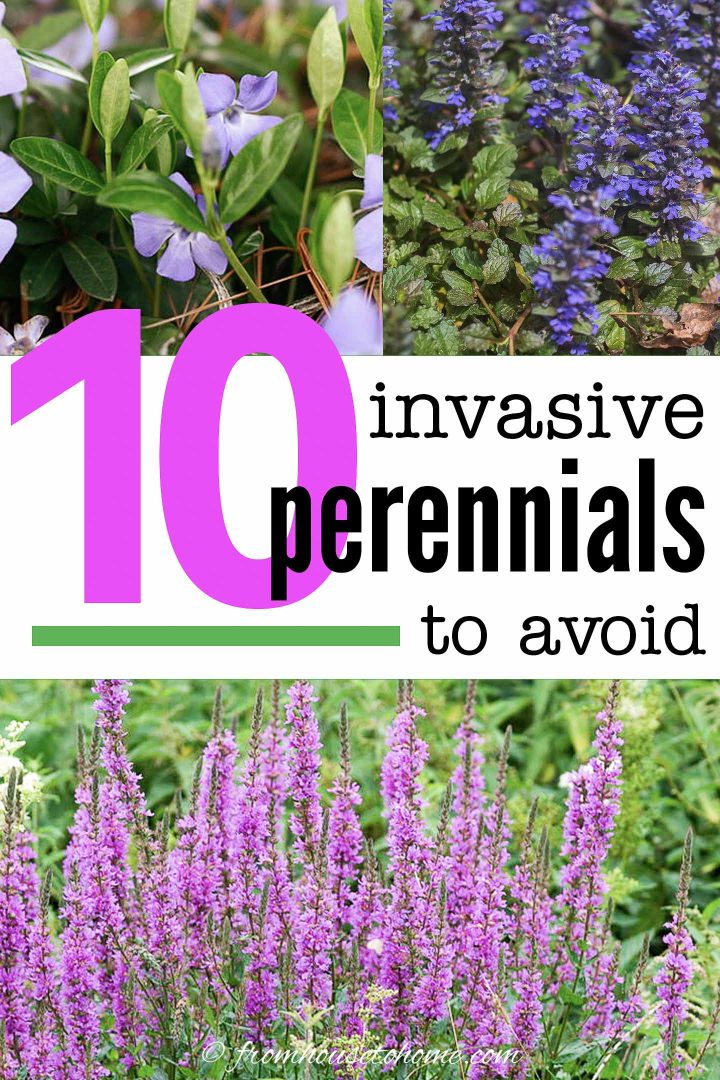
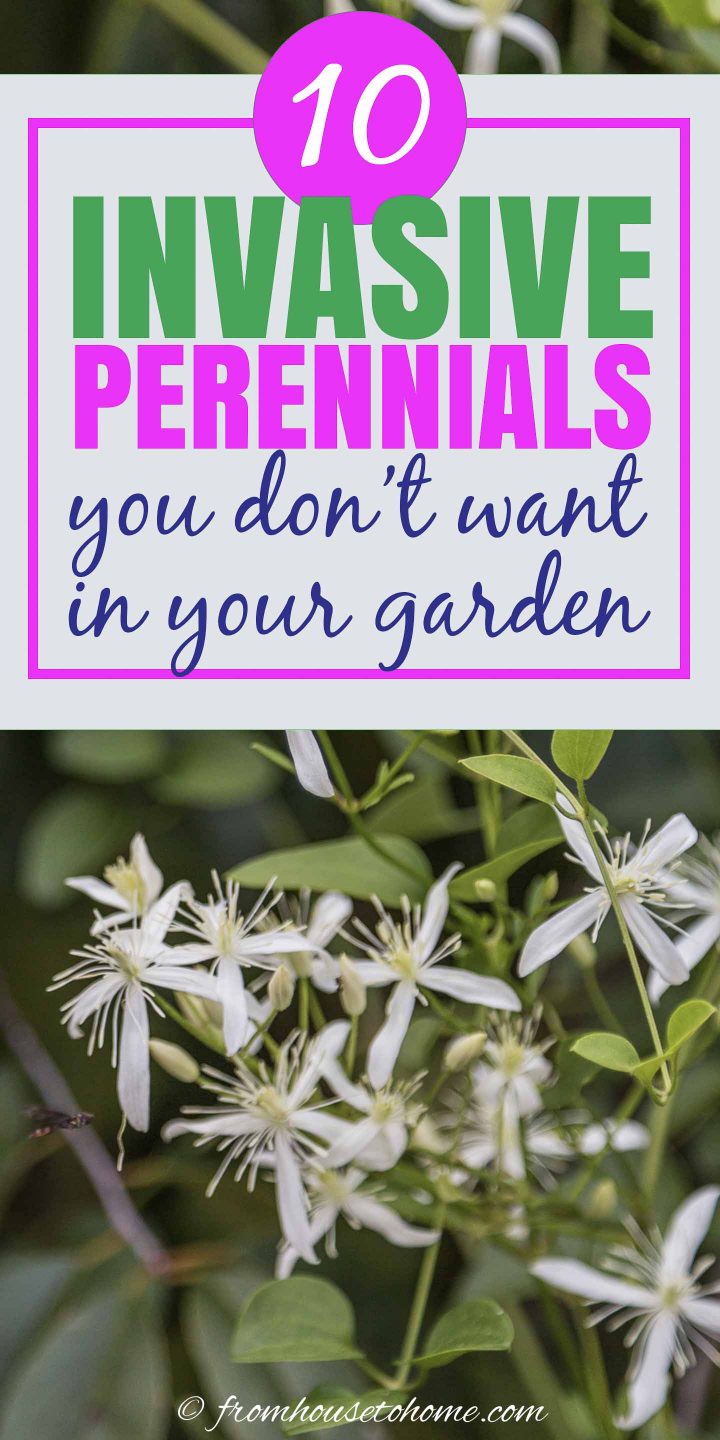
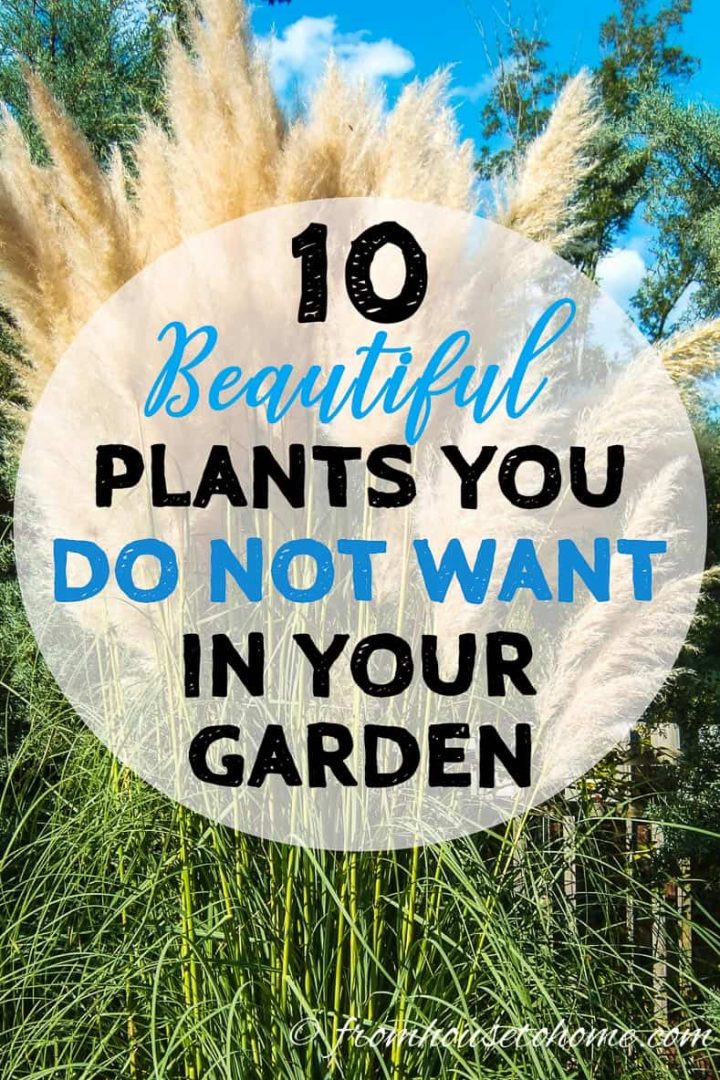
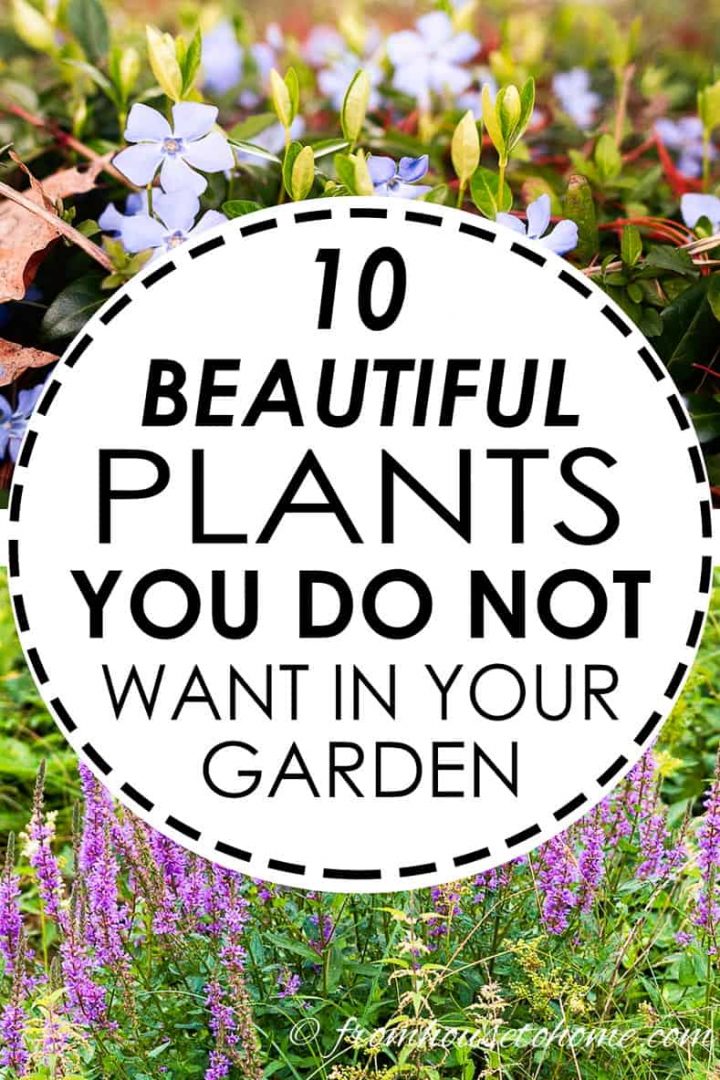
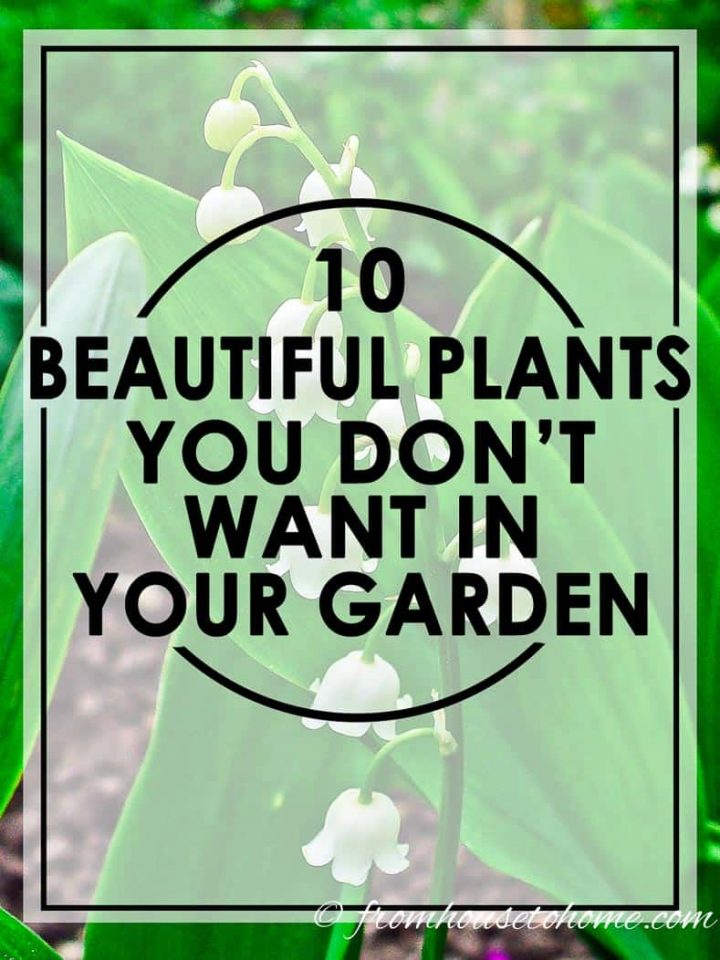
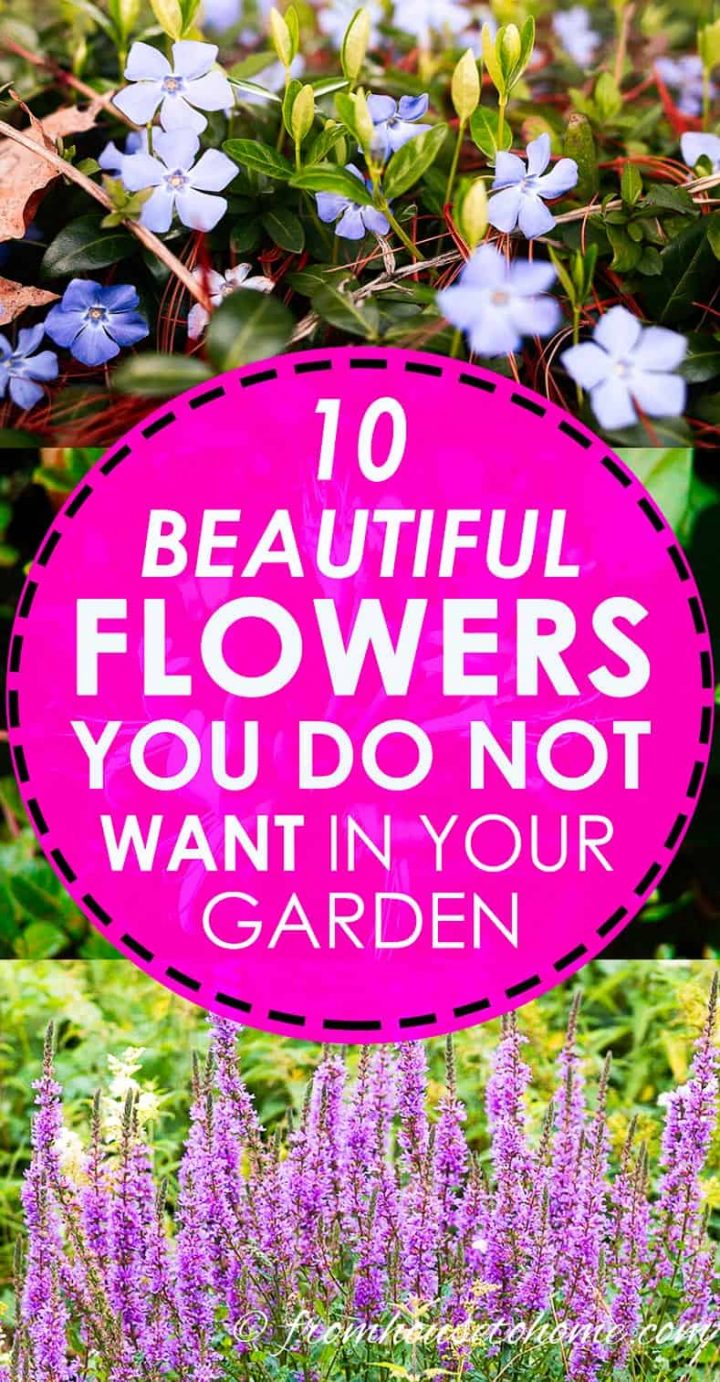
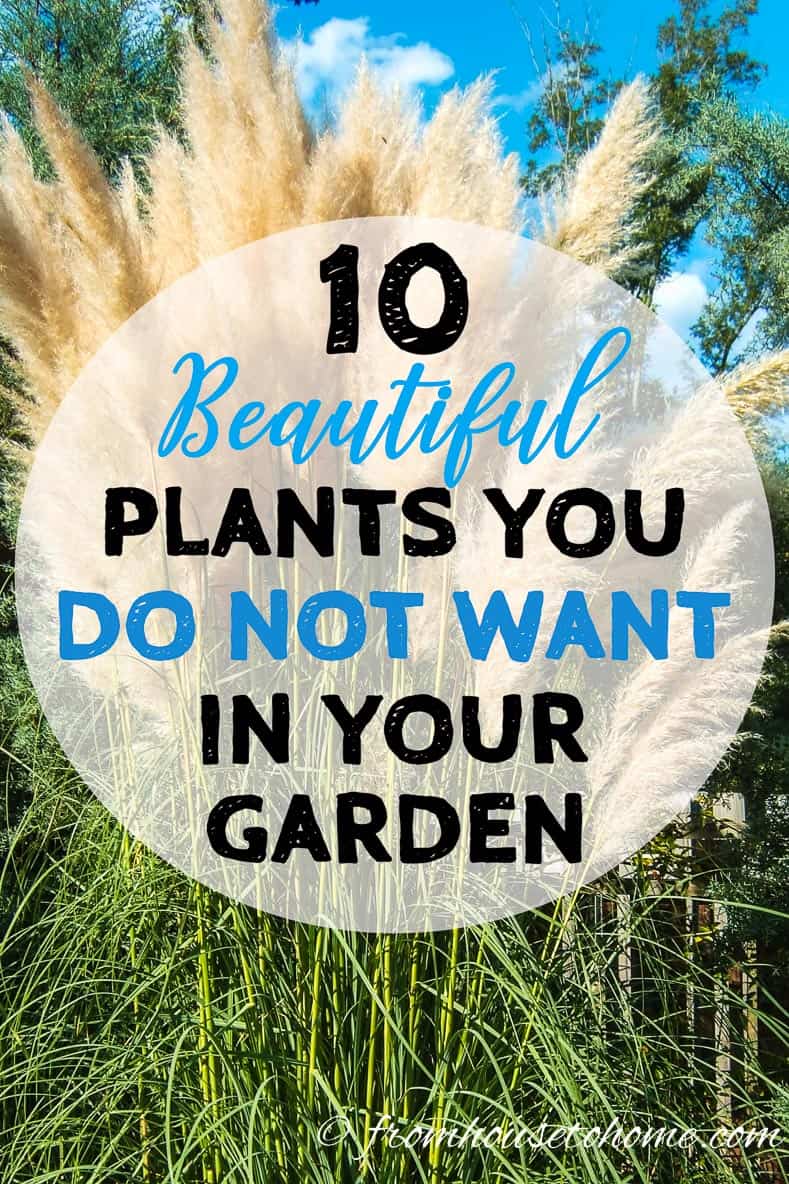
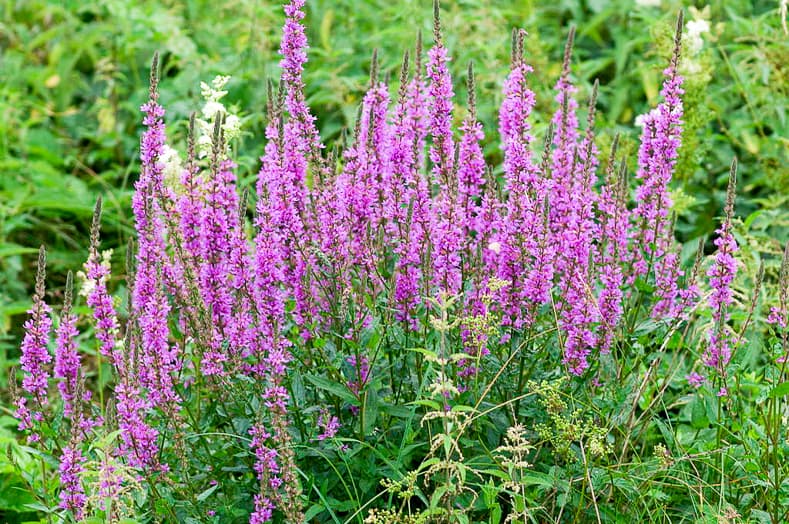
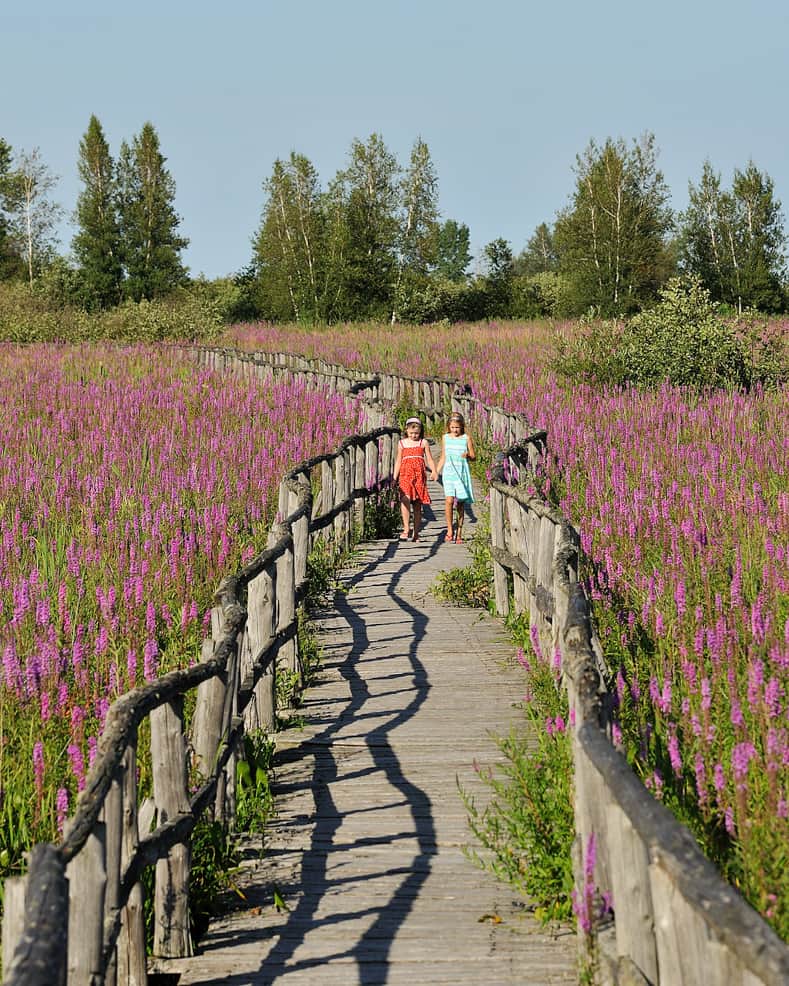
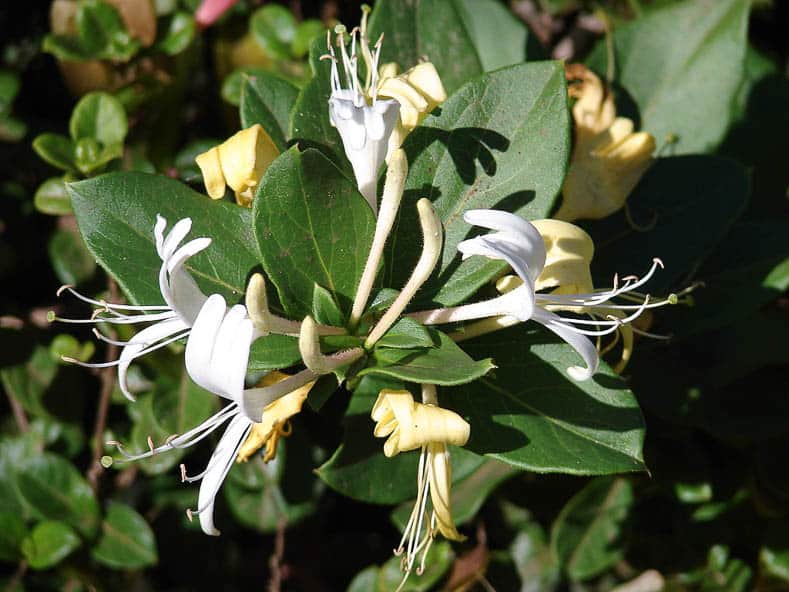
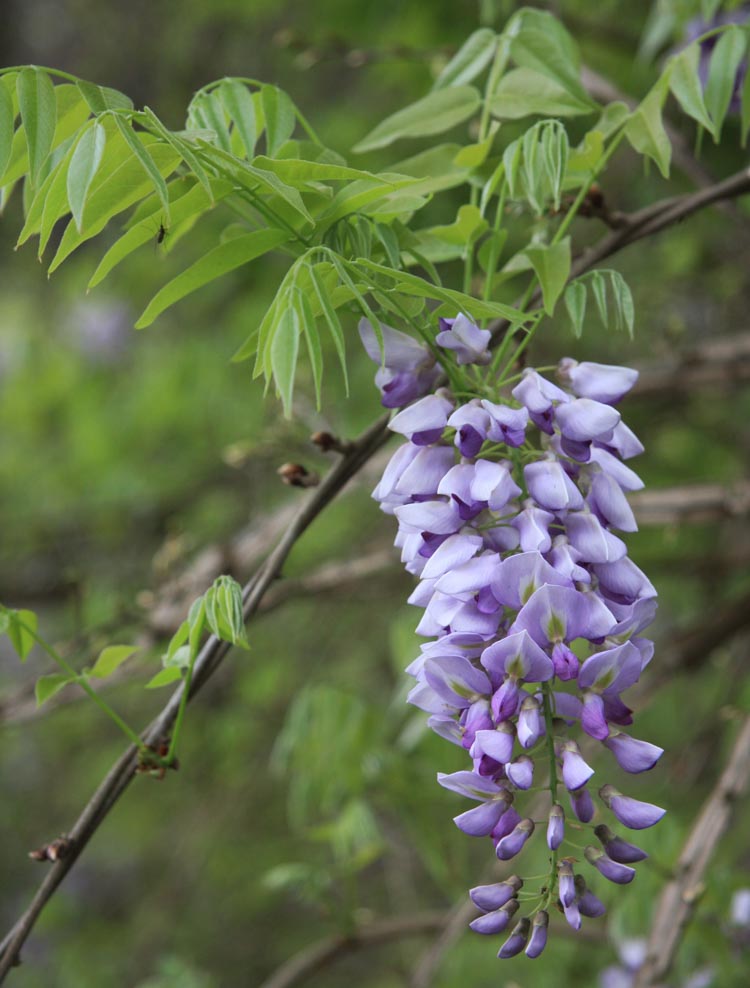
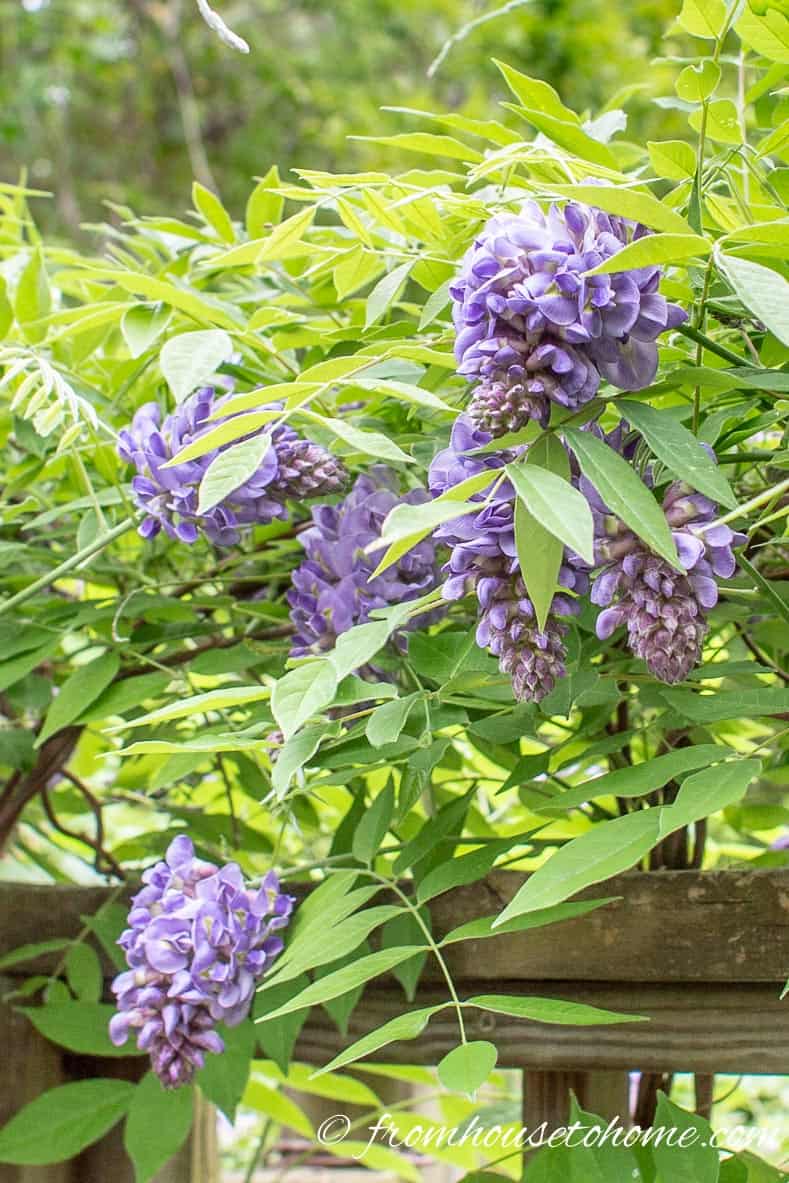
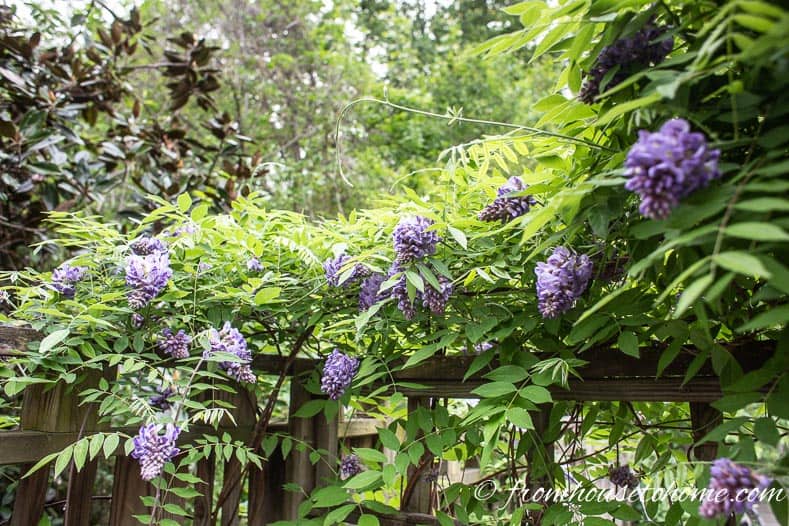

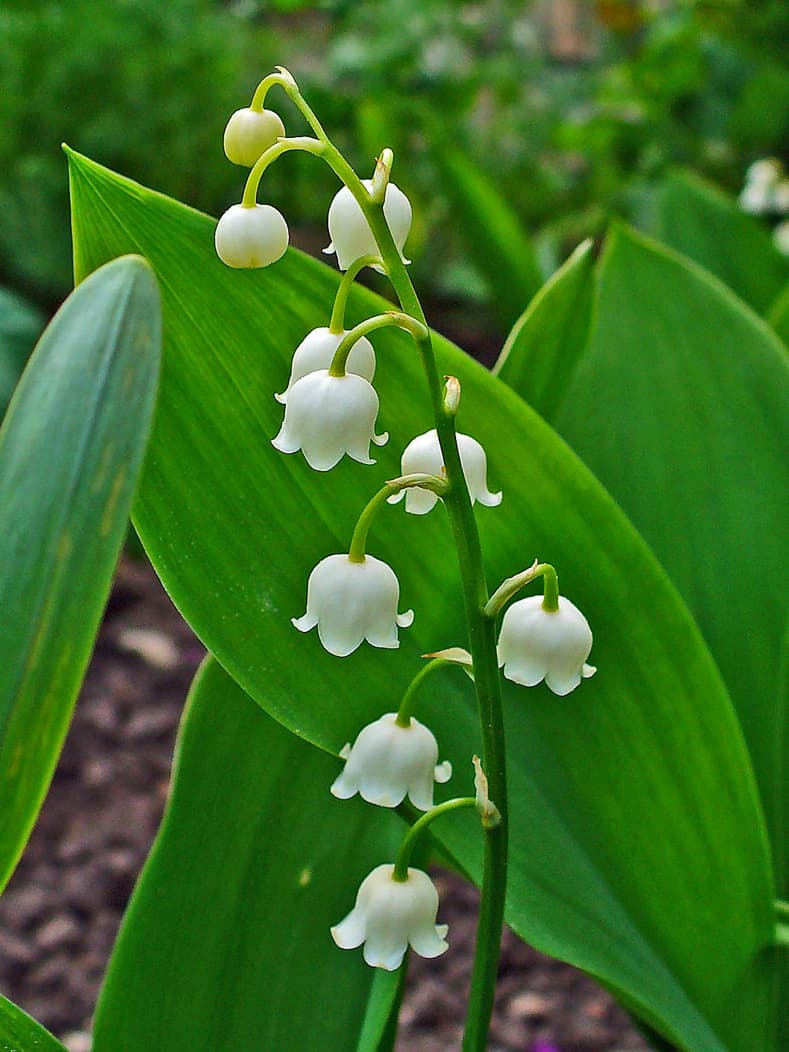
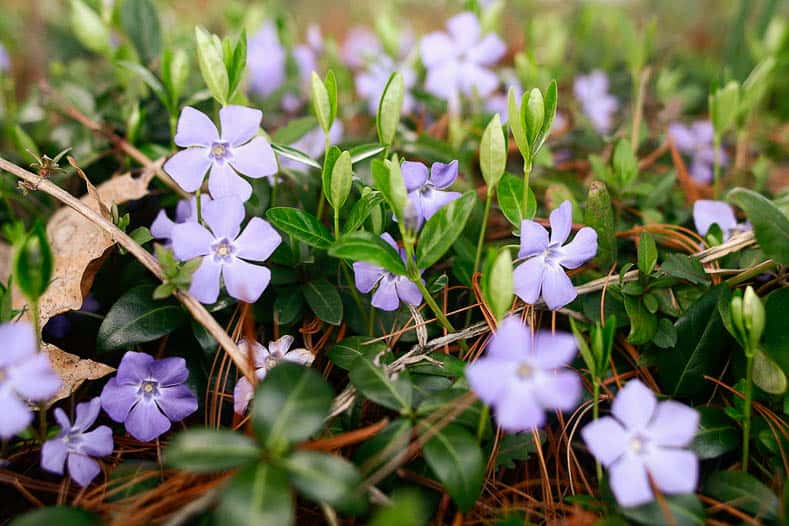
![English Ivy by MurielBendel (Own work) [CC BY-SA 4.0], via Wikimedia Commons](https://www.fromhousetohome.com/garden/wp-content/uploads/sites/12/2017/01/hedera_helix_juvenile_leaves.jpg)


Japanese Knotweed!
You’ll never get rid of it as it slowly swallows your (and your neighbours) yard!
Thanks, Maija! I haven’t had to deal with that one personally, but I’ve heard it’s awful!
Penstemone. I bought this from our extension service a few years ago and it has been a thorn in my side ever since. It takes over everthing, choking out all other plants and you CAN NOT get rid of it. The roots are very deep and break off easily when you try to pull them out. Any little piece left in the ground will grow a new plant. Horrible! This plant should definitely have come with a disclosure statement. I finally sprayed a small section with round up which killed it but harmed surrounding plants. The rest is still going wild in my garden.
Thanks, Tammy! I hate it when I have to resort to using Round Up, but sometimes it’s the only way that seems to work. I won’t be planting Penstemon in my garden any time soon 🙂
Here in Michigan Purple Loostrife is considered an invasive. However, over the last 30 yrs my mother has planted everyone of these invasives except bamboo and pampas grass which unfortunately I now have to contend with these horrible plants as she had a stroke 6 yrs ago and they are now way out-of-control.
I’m sorry to hear about your mother, Linda…and all that gardening work!
Wisteria …
I have wisteria that was already growing when I moved into my home. At first I was excited because they smell so wonderful, but, they are sooooo invasive. The roots, well the shoots, spread out all along and crawl along the grass wanting to latch on to anything and grow. Mower doesn’t cut them up. They jump across on a nearby tree and scramble up it over and over, no matter how much you cut back on the wisteria. When they are really in full bloom, they are covered up in bumblebees. Sorry, but as much is I like a fresh bouquet, I’m not sparring with bumblebees for one! This thing smells wonderful when it’s blooming but I am ready to put weed killer on it and cut it down to the ground and it will probably still come back!
Hi MJ…I agree on the Wisteria…I love the look and smell of it when it’s blooming, but not sure it’s worth the effort 🙂
Non clumping bamboo!
I lived in a two-story home with no tree on the south side, I thought I will plant some bamboo for shade on that side of the house. The bamboo grew to the second story, when the rain came it waited it down so it leaned out over the side yard. It multiplied quite quickly and every year it came up there was more. Finally after having a rainbow arch of bamboo instead of shade on the south side of my house I thought I should take it out. What a job!! I was much younger then, and worked a lot outside anyway, but this stuff was like it was concreted into the dirt. I had a pick ax I had shovels I had everything I could think up time to dig those roots out, but they are so embedded in the dirt, even with a pickax in all of my weight, they are nearly impossible to get out. I was thankful I didn’t have a yard full of that stuff. I will never ever plant bamboo again I don’t care what kind it is. I did get it out, but my back my body and everything about me hurt. So, it is invasive, and very very hard to get out, even if you only have a few “stalks” or whatever they are called!
I have heard that taking out bamboo is quite a chore! I didn’t realize that the clumping bamboo is still pretty bad…haven’t actually tried it…and I guess I won’t now! Thanks for the warning 🙂
Geez, my third comment… I’ve had this stuff too! I guess if you put it in a big field that you didn’t care if it just grew and it didn’t matter it would be OK. I put some in the corner of my yard in my little flower bed… looked really pretty for a while, until it got so big that was all you could see and it was at a corner with a stop sign, so it eventually made it hard to see oncoming traffic. I should’ve known when I had such trouble digging it out to get a start, having to use an ax to chop roots to get a start, it might be trouble! I do think this stuff is very pretty, but if the plant it somewhere, it needs to be somewhere that it will not bother other plantings. There’s a place around here that has a long driveway up a hill, and with no trees. They have it planted up each side of the driveway, it looks nice there, and there’s nothing there for it overtake. They burn it back every year to remove all of the dead leaves, as they are also very sharp on the edges. This is one place that looks nice and seems to be OK.
I agree that the grass looks very nice, and it would be pretty if you have a wide open space to plant it in…my garden never has wide open spaces 🙂 Burning it down every year sounds like a great way to keep it a little under control…thanks for sharing!
I personally have had trouble with Trumpet Vines and Boston ferns. I’m currently battling the ferns. They have completely taken over my landscaping and are spreading into the lawn. This after just a year! I regretfully did not research them until I realized they were monsters. Yes, they are classified as invasive.
Thanks, Christine! I didn’t know about those ones…more plants to add to my “Do Not Buy” list 🙂
TRUMPET VINES Just put in a new lawn, thought the vines were removed. Two weeks into the new lawn and the vines are showing up. Did a totally organic replacement of lawn and surrounding area and don’t want to use chemicals but may have to as they are very persistent. I will be researching every plant from now on.
Thanks, Diana…I hate it when plants with such pretty flowers end up being such a nuisance. And I totally agree about having to research before putting new plants in my garden!
I have two that I am battling now – #1 Soapwort aka Bouncing Bet, it’s the first to sprout in the spring and the last to die in the fall. It spreads by seeds and by rhizomes. It infiltrates your favorite plants and chokes them out. #2 Bittersweet. I wish that the garden center I purchased it from would have forewarned me. Also, there are two varieties and I was sold the one that never produced the berries. So now I have a vine that is prolific in greenery and also spreads by rhizomes and will show up even 6 feet away from it’s original planting.
Hi Robin…Thanks for the additions to the list! Those plants that spread by rhizomes are really tough to get rid of. There always seems to be some little bit left in the ground that grows where you don’t expect it.
Morning Glories! We have spent a decade trying to get these “sweet little vines” OUT of our yard. They have even choked rose bushes out, they wrap around and strangle everything, everywhere, and they keep popping up like a weed. If you don’t catch them when they are just sprouted, they will eat up any plants and take over the soil with their roots. Morning Glories are the biggest threat to mankind as far as I’m concerned.
Thanks for the addition to the list, Pam! And I completely agree with you…Morning Glories are a real nuisance, and very hard to get rid of.
Monarda (bee balm) is lovely, but spreads very quickly via underground runners. Passion fruit vine is also super-invasive. I can attest to pampas grass, ivy, and vinca as invaders, too!
Thanks for the additions to the list! I have also had some experience with those Bee Balm runners 🙂
I have had wisteria as a container plant. You have to prune it if it gets out of hand, but I had the same wisteria in a container for 15 years with no problem or runners.
Hi Susan…Keeping wisteria in a container sounds like a great idea! That way you can still have it in your garden and not have to worry so much about it taking over 🙂
Ruelias, had them on the ground for just 2 months and they started growing everywhere, removed them digging 2 feet and they still come out.
Thanks, Sonia! I haven’t tried planting Ruelia…now I know not to 🙂
Don’t plant Lantana or butterfly in the ground or it will take over
Thanks for the suggestion, Donna!
I soooo agree with you! Three years ago I bought three lantana plants for a tiny little circle garden to “just fill in”. I am still pulling up lantana…it is everywhere… borders, containers, raised beds….like a carpet of lantana. And you have to hurry to pup, because it will go to seed very quickly and blow everywhere!
We bought a house that had Liriope (Monkey Grass) and English Ivy taking over the entire yard. It is uncontrolably spreading into the nature around us! They spread like bermuda and even penetrate thick landscaping fabric designed to control weeds.
Hi Tina…I haven’t tried Liriope before…thanks for the warning! But I definitely know the pain of trying to get rid of English Ivy. It sounds like you have a big job to take of…Good luck!
I hate monkey grass & English ivy. Did the monkey grass. Never again!!
Thanks for the additions to the list, Kathy!
Our house had English ivy growing on it when we moved in. It went up to the second floor on 2 sides of siding and the back which is brick. It eventually caused damage to the brick and pulled a downspout down. Removing after 3 years is even worse. We realized that’s why previous owner kept it for 20 yrs. The 3 inch ‘legs’ are imbedded in the brick, even the little ‘feet’ left by new growth pulled the paint from the siding. It was astonishing it originated from one root in the corner of a tiny flower bed!
That sounds like a nightmare, Dawn! Hopefully you have it under control now.
My evil addition to the list would be Privet. It’s taking over everywhere here in Tennessee and all over the south. It gets hundreds of berries on it in the fall that birds eat and then “deposit” all around. Each seed that touches the ground becomes a new plant. They are incredibly fertile. Privet is at the level of being an emergency hazard for native wildlife and vegetation all over the eastern U.S. because of how thick it grows, blocking space and sunlight for other plants. Fortunately, when it’s small, it’s pretty easy to pull up out of the ground with the roots intact.
Thanks, Nellie! I didn’t know Privet was that invasive…definitely another plant to avoid!
I have had privet heges for over 30 years and had no problem with them! I wonder if there are other varieties maybe?
Hi Judy…it could be different varieties, or it may be that the growing conditions where you live keep it from getting too out of hand.
I think the key to all the talk about invasive plants, is what area you are! Not one of those plants is a problem in my area. Yes not one! I’m in a zone 3. Most of these struggle or don’t survive the winter at all. And also remember your soil type. Our soil is alkaline here.
Hi Shauna…that is true…if the plants can’t grow in your climate / soil conditions then they don’t have much chance to become invasive (and you probably wouldn’t be planting them in your garden anyway since they don’t grow very well).
Ha ha, Yes, I am scrolling this list to see if I can find something that is hard to kill.
I planted a start of Chevron Plant 2-3 years ago under a pine tree. It spread out of control. It seems to travel by sending out runners. It also spreads by seed that spire from the plant in late summer adding to the potential for it showing up all over the landscape. I like the look of the plant but it is out of control. I plan to spread pre-emergent herbicide and dig up all that emerges this spring.
Thanks, Ann! I haven’t tried that one but now I know not to 🙂 With runners and self-seeding, it sounds like a nightmare to get rid of!
Thanks for sharing! I didn’t know Wisteria was such a bear!
I hated to add Wisteria to the list, because I love the way it looks. But now that I’ve grown it in my garden (and subsequently tried to get rid of it), I don’t think I would try it again 🙂
I have found that gooseneck loosestrife and chameleon plant are horribly invasive. And your preaching to the choir about lilly-of-the-valley.
Thanks, Vicki! Good to know about the Chameleon plant…I definitely feel your pain with the loosestrife and lily-of-the-valley 🙂
Ruiella or Mexican petunia the drawf type is not.
Thanks, Larry! Another plant to add to the list!!
have a tan skin tree ? that is spreading up shoots from one side of the house to the other and in all directions.. one side of the house to another means the roots are going under the house.. have a septic and worry about it causing damage to drain field.. how do i kill it ?
Hi Lorraine…I would cut the tree down, then drill holes into the stump and pour motor oil in them. If you have large roots coming up in different areas of your yard, you may want to drill holes and apply motor oil to them too. That should kill it off pretty fast. Good luck with it!
what an easy solution ! thank you.. i’ll try it..
Canna lilies! I live in Southern California and once you plant those, they are so invasive here too! They are beautiful but watch out!
Thanks, Becky! I didn’t know that about Canna Lilies…another one to add to the list 🙂
i’m in zone 9—-lambs ear is so pretty but very invasive-wherever it touches it grows. best to keep in pots.
Hi Sandi…that’s a good one. I’ve had the same trouble with Lamb’s Ear…definitely best as a container plant 🙂
Here in Northern California, lambs ear is the annoying weed we try to pull as soon as we see them!
Thanks, Rachel! I have problems with Lambs Ear in South Carolina, too. It’s been relegated to a container plant in my garden 🙂
Wow ladies!! Thanks for all the great information. I used to want a couple of these and not now. I just soaked and planted red Morning Glory seeds. I will see about finding and digging them up before they go crazy. My raised bed is really not that big. Being in Colorado Springs, CO in the high altitude, higher than Denver, I have a lot of problem with plants doing anything. I am good with annuals but I have 2 thornless roses that I have had for years and the tallest they have gotten has been 3 ft. I did not prune it at all last fall. It is suppose to bloom like crazy and get as high as 12 ft tall. Never happened. I have had a few plants or seeds that came up 3 yrs later. Crazy. Hopefully these Morning Glories will be ok, sure I can’t find them all. I do have some 4 O’Clocks come in every year and bloom around 4:pm. They are not invasive and really pretty. They are a kind of Morning Glory that is why I bought these red seeds. Will see what happens. Thank you again ladies.
Linda
Hi Linda…it sounds like you may have some tough growing conditions, so the morning glories may be okay. They do have really pretty flowers 🙂 Those thornless climbing roses are a bit tricky. They grow pretty well in my South Carolina garden, but when I lived in Canada I could not get them to do much (I don’t think they like cold winters).
If you want to add another invasive, it is Donkey Tail spurge. Very pretty in the spring with bright yellow flowers, but it spreads like crazy, and the white milky substance in the stems can be very toxic to the skin. A neighbor here in Colorado (zone 5) went to the hospital after trying to weed out this spurge.
Thanks, Linda! That sounds like 2 reasons not to plant it…invasive and toxic! (I hope your neighbor is okay.) Definitely a good addition to the list.
Rose of Sharon, grows fast and the seeds blow everywhere causing tiny bushes to pop up. If you don’t see them early they put down roots to China! Beautiful flowers and the humming birds love them but they are a real pest!
Thanks, Sharon! I haven’t had too much trouble with Rose of Sharon re-seeding itself (good to know it could be an issue!)…but I can certainly vouch for it growing fast and taking over whatever spot it is planted in.
Yes, I saw trumpet vine on here and agree. I currently have bishops weed (dont know it by any other name). We have dug and dug it and if there is the tiniest of root left in the ground, it will sprout. It is outlawed in some states because it has been known to take over wild areas. It is a ground cover of sorts but grows about 6 or more inches tall. We managed to almost eradicate it in one area by spraying it with weed killer and then covering it with a piece of plastic or tarp to smother it out..left on for over a year..
Hi Patti…I have heard horror stories about Bishop’s Weed…Good addition to the list! Thanks for the suggestions on how to get rid of it.
Trumpet vine-don’t EVER plant it-spreads like crazy even in the grass-turtlehead and black eyed Susan’s-never plant em-common orange daylillies too-think my whole garden is a cautionary tale of what not to plant….
Thanks for the suggestions! Sounds like you have some work to do in your garden 🙂
Hi Wanda, it’s true that many of these invasive plants are quite OK on alkaline soil – I’ve been gardening on highly chalky soil for 40 years, trying desperately (and failing) to grow wisteria. On my high pH soil, a plant to avoid at all costs is aconitum (roots down several feet!) The lovely little crucianella stylosa with its wondefully perfumed spherical flower heads can get out of hand too.
Thanks for the additions to the list, Andrew! The soil in my area of SC is pretty acidic so definitely different growing conditions than what you have…good to get some advice for those that are dealing with alkaline soil.
I second that comment on trumpet vine. I have shoots coming up in my new grass. My organic landscaper is even contemplating using a chemical to get rid of it.